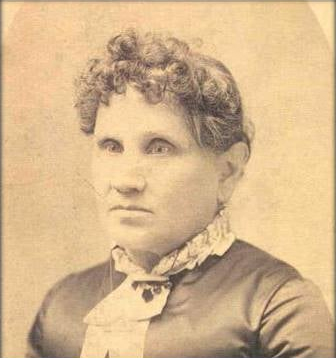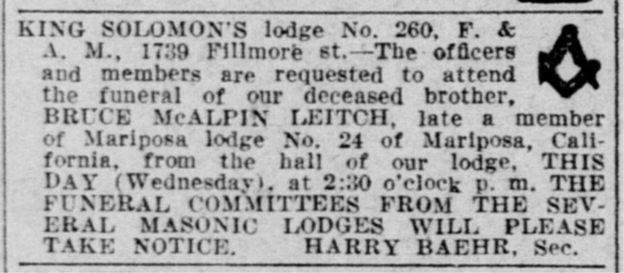
WAWONA
JOURNAL
JOURNAL
By Tom Bopp
Wawona Journal on YouTube
Wawona Journal on YouTube
Wawona’s Oldest Residence: The Leitch Homestead House
September 19, 2025
By Tom Bopp
Acknowledgements to Dan Nelson (Wawona) who uncovered most of the Mariposa Co. land records, Tom Phillips (Mariposa) whose research on North Wawona is invaluable, and Nadia Westenburg (NPS) for sharing vital NPS resources.
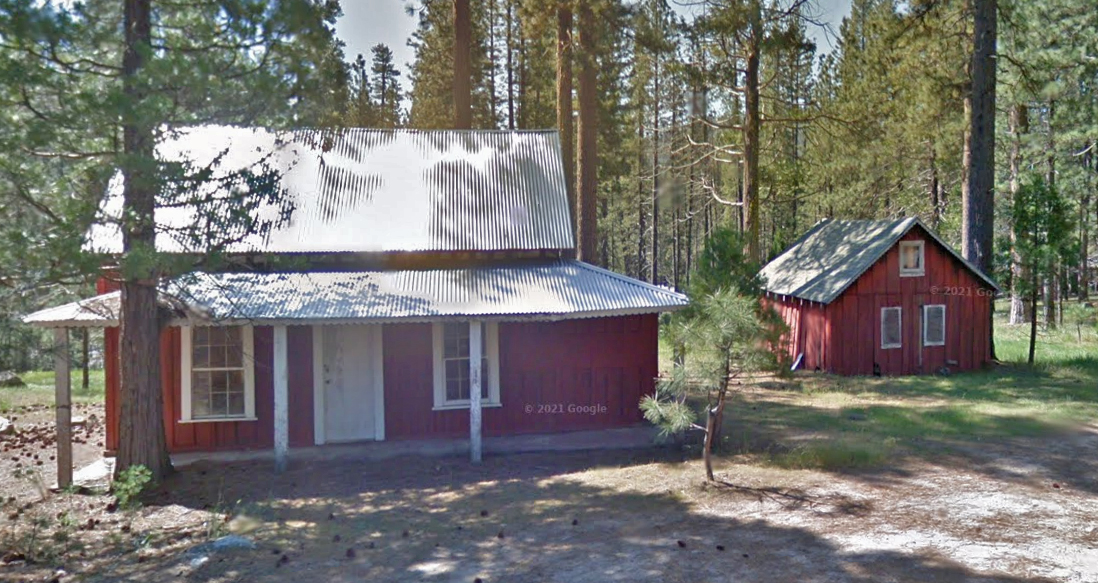
Introduction
Across Chilnualna Road from the Wawona School, a long-abandoned house packs a long history.
Bruce, Van Campen, Leitch, Jackson, Butler, Tyrrell, Leonard, Sedlacek, Vagim: a few of the names that link the house to the Homestead Act, backcountry packers, Airedale puppies, Seventh Day Adventists, a senator, a shake-maker, and missing fingers. Though located on the north side of Wawona, the house connects directly to the settlement of South Wawona.
Leitch Homestead House Chronology
1888 Apr 4 - Catherine Leitch files homestead claim
1890 - Probable date of construction per Homestead Act requirements
1893 - Catherine Leitch “at her ranch near the Chilnualna Falls” July to November
1895 Jul 28 - Government certifies Catherine Leitch’s homestead claim
1902 Oct 10 - Death of Catherine Leitch; her son, Bruce McAlpine Leitch inherits property
1907 - Thornton Jackson presumed to be living in the Leitch Homestead House
1910 Mar 20 - Death of Bruce M. Leitch; his sister Kate Bush inherits property
1927 Oct 17 - Kate Bush sells her property, 2/3 interest to John R. Tyrrell, 1/3 to Thornton Jackson
1927 Nov - Jackson sells his 1/3 to Tyrrell
1929 June 6 - Tyrrell sells parcel with Leitch Homestead House to Thornton Jackson for $1
1930 - Thornton Jackson’s “Wawona Homesite Co.” selling parcels of Tyrrell property
1930 - D. A. Leonard appears to become joint-tenant on Thornton Jackson’s parcel
1931 - SDA purchases first parcel from Tyrrell
1933 - Map includes Leitch Homestead House and other structures, tracts to be sold to NPS, and land purchased by SDA for Camp Wawona
1934 - D. A. Leonard dies; wife and son inherit part-ownership in Jackson property
1936 Jun 23 - Leonards sell their interest in Jackson’s property to Jackson, plus 3.84 acres adjoining Jackson property on its east boundary
1936 Jun 24 - Milo & Julia Sedlacek become joint-tenants on Thornton Jackson property
1939 Mar 11 - Death of Thornton Jackson in Merced; Sedlacek assumes ownership of property
1943 - Sedlaceks sell to Vagim
1971 - Vagim develops plan for multi-story hotel on property
1970s - By this time Vagim operating “Wawona Village” trailer park
1977 - NPS initiates condemnation of Vagim property
1980 Death of Ed Vagim
1986 Wawona Village dismantled; Blanche Vagim leaves
1994 Death of Blanche Vagim
1888 Apr 4 - Catherine Leitch files homestead claim
1890 - Probable date of construction per Homestead Act requirements
1893 - Catherine Leitch “at her ranch near the Chilnualna Falls” July to November
1895 Jul 28 - Government certifies Catherine Leitch’s homestead claim
1902 Oct 10 - Death of Catherine Leitch; her son, Bruce McAlpine Leitch inherits property
1907 - Thornton Jackson presumed to be living in the Leitch Homestead House
1910 Mar 20 - Death of Bruce M. Leitch; his sister Kate Bush inherits property
1927 Oct 17 - Kate Bush sells her property, 2/3 interest to John R. Tyrrell, 1/3 to Thornton Jackson
1927 Nov - Jackson sells his 1/3 to Tyrrell
1929 June 6 - Tyrrell sells parcel with Leitch Homestead House to Thornton Jackson for $1
1930 - Thornton Jackson’s “Wawona Homesite Co.” selling parcels of Tyrrell property
1930 - D. A. Leonard appears to become joint-tenant on Thornton Jackson’s parcel
1931 - SDA purchases first parcel from Tyrrell
1933 - Map includes Leitch Homestead House and other structures, tracts to be sold to NPS, and land purchased by SDA for Camp Wawona
1934 - D. A. Leonard dies; wife and son inherit part-ownership in Jackson property
1936 Jun 23 - Leonards sell their interest in Jackson’s property to Jackson, plus 3.84 acres adjoining Jackson property on its east boundary
1936 Jun 24 - Milo & Julia Sedlacek become joint-tenants on Thornton Jackson property
1939 Mar 11 - Death of Thornton Jackson in Merced; Sedlacek assumes ownership of property
1943 - Sedlaceks sell to Vagim
1971 - Vagim develops plan for multi-story hotel on property
1970s - By this time Vagim operating “Wawona Village” trailer park
1977 - NPS initiates condemnation of Vagim property
1980 Death of Ed Vagim
1986 Wawona Village dismantled; Blanche Vagim leaves
1994 Death of Blanche Vagim
Homestead
 Detail: Record of Albert O. Bruce, Catherine R.B. Leitch and Roscoe Greeley homestead claims, indicating acreage, claim dates & fees, and in three instances dates when the claims were certified (“proven”). The claims cover all 640 acres of Section 35. https://www.familysearch.org/ark:/61903/1:1:6NW3-GVQ4?lang=en (free registration required)
Detail: Record of Albert O. Bruce, Catherine R.B. Leitch and Roscoe Greeley homestead claims, indicating acreage, claim dates & fees, and in three instances dates when the claims were certified (“proven”). The claims cover all 640 acres of Section 35. https://www.familysearch.org/ark:/61903/1:1:6NW3-GVQ4?lang=en (free registration required)On Saturday, April 14th, 1888, Catherine R. Bruce Leitch paid the ten-dollar filing fee and turned in her application for a homestead claim in Wawona. Doing so, Catherine was taking responsibility for 160 acres in South Wawona, including Forest Drive from the current Seventh Day Adventist camp to the Redfern property driveway (near the wishing well), about a mile from the Wawona Post Office. The application required that she build her home on the property and reside there for at least five years, after which she would appear before a land officer to “prove up” her claim with evidence she’d met the requirements.
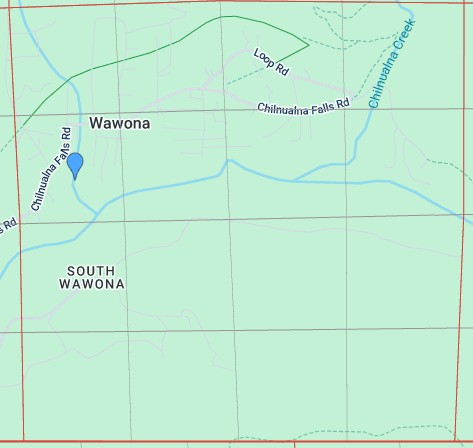
The rust-colored lines encase Section 35 on the Township map, and the gray lines divide the map into eighths. Catherine’s claim was for all the squares in the third row down from the top.

Detail: Catherine R. B. Leitch’s homestead.
The northwest corner of her property had several attributes to recommend it as a location for Catherine’s homestead house. Encompassing a third-mile stretch of the South Fork Merced River, the triangle of land on the north bank adjoined the property of her brother and sister-in-law, and lay in close access to Chilnualna Road just a few rods from the river. Being on the sunny north side also ensured a longer season of accessibility to the property in the days before motorized snowplows.
Though living in New York, Catherine would certainly have known about Wawona from her relatives. Her nephew, John Bruce, had partnered with Henry Washburn in Mariposa County for many years, most recently in running the Wawona Hotel, and Washburn had married Catherine’s sister, Jean, in 1865. Catherine’s son, Bruce M. Leitch, worked for the Wawona Hotel as early as 1881 as a stage-driver. 1 Her younger brother Albert (by some 13 years), had homesteaded 320 acres in Wawona just a few years earlier, and though he was often away on mining ventures, his wife, Azalia, spent plenty of time at their homestead house in Wawona. Azalia’s brother, Aziel Barnes Van Campen, lived nearby on his own homestead, just east of his sister’s. 2
Aziel was the carpenter in the family, and according to notes from a letter he wrote in 1926: “I went to Wawona and worked for ten months for my sister, Mrs. A. O. Bruce … built a house for his sister…” 3 According to Albert and Azalia’s daughter, Hattie: "The Catherine Leitch house which still stands was the poorest structure erected and built by Barnes Van Campen, father furnishing the lumber." 4
An 1893 blurb in the San Francisco Call indicates that Catherine resided only seasonally at her new home, perhaps spending her winters in the city:
Catherine’s homestead was certified on June 19, 1895, indicating her having appeared before a land officer with ample evidence (along with two witnesses) that she’d indeed built a home and resided on the property since 1890.
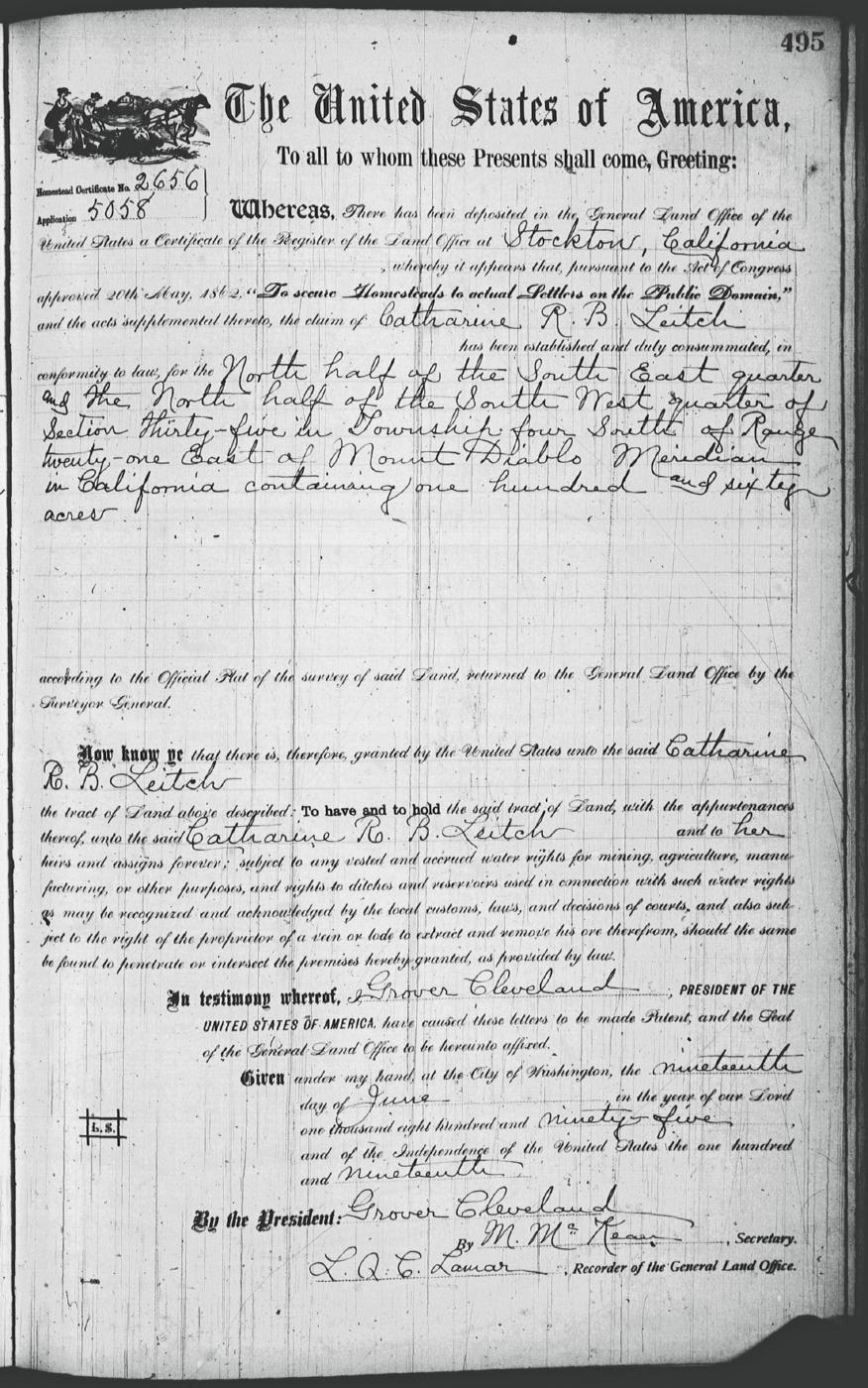
Grant securing the Catherine Leitch Homestead on June 19, 1895, from which the start-date of her residence on the property is inferred to be 1890.
https://glorecords.blm.gov/details/cdi/default.aspx?doc_id=1204578&sid=diibhp1o.yuk#cdiDetailsTabIndex=1
The Leitch Family
The lack of history regarding Catherine Leitch could fill volumes. Answers remain elusive as to when, or why, she left New York for California, not to mention whatever became of her husband, John. Inferring from the age of her oldest child, Bruce M. Leitch, Catherine would have been married before his birth in New York in 1858.
Bruce M. Leitch voter registration, Feb. 26, 1892 (by name, age, height, complexion, eyes, hair); inferred birth year: 1858.
https://www.familysearch.org/ark:/61903/3:1:33S7-9T7V-HLK?view=index
On a side-note, in histories and genealogies Bruce Leitch’s middle name is consistently given as “Mitchell,” but the only primary sources yet found that actually spell out his middle name give it as “McAlpine” (in his 1892 voter registration, above), and “McAlpin” (in a funeral notice posted by his fraternal order in 1902):
We learn the name of Catherine’s husband when their daughter Kate gets married to a fellow New Yorker named Hewlett Bush. On the 1884 marriage record, Kate gives her dad as John M. Leitch, her age as 23 (meaning she was born around 1861), and, interestingly, her birthplace as Charleston, South Carolina.
Following these clues, a few things emerge from the historical muck about John and Catherine Leitch. John Marshall Leitch was born in Charleston, South Carolina, and lived and worked in both New York City and Charleston.5 In 1831 his name appears on documents as witness to the sale of enslaved people.6 He was also an entrepreneur; in 1843 he wrote to former president John Quincy Adams, then a congressman in Massachusetts, prompting this interesting response from Adams:
“At the Department of State I delivered to the present Secretary Upshur a Letter to him from John M. Leitch a merchant in New-York, who had enclosed it to me, requesting me to deliver it to the Secretary of State— It contained an enquiry whether the United States would protect a commercial adventure to the coast of Circossia [sic Circassia] Upshur read the Letter, and said in a sulky tone that a duplicate of the same Letter had been received by him and answered that to such general enquiries no other than a general answer could be given— What the general answer was, he did not say—"7
The ongoing Russo-Circassian War (1763–1864) and Russia’s naval blockade of the Black Sea coast likely thwarted Leitch’s commercial venture. Undaunted, in 1846 he latched on to a scheme to run telegraph lines from New York through Charleston to Pensacola, Florida, and on through Mobile, Alabama, to New Orleans. His efforts as a promoter were covered both in Charleston and New York newspapers.
In 1848, Leitch once again appears as witness to a slavery transaction, this time involving the estate of possible relatives.8 A June 2nd 1855 ad in the New York Daily Tribune shows his ownership of a horse-feed milling operation near the East River.9
The birth of their son, Bruce, places Catherine and John in New York in 1858, but the birth of their daughter, Kate, has them back in Charleston, South Carolina in 1861. The last we see of John and Catherine together is when they sell off their Brooklyn property to an investor in 1871. 10 The historical record has yet to divulge John’s fate, when Catherine and her son Bruce came to California, or whether any of them were in New York in May of 1884 for Kate’s wedding. Kate and her husband, Hewlett, evidently remained in New York until their deaths; Hewlett in 1924, and Kate in 1942.
On October 10, 1902, Catherine R. Bruce Leitch died in her San Francisco home at 1671 Golden Gate Ave. 11 According to family member Tom Phillips’ research, she left her estate to her children, Bruce and Kate, and two years later Kate sold her share of the Wawona property to her brother.
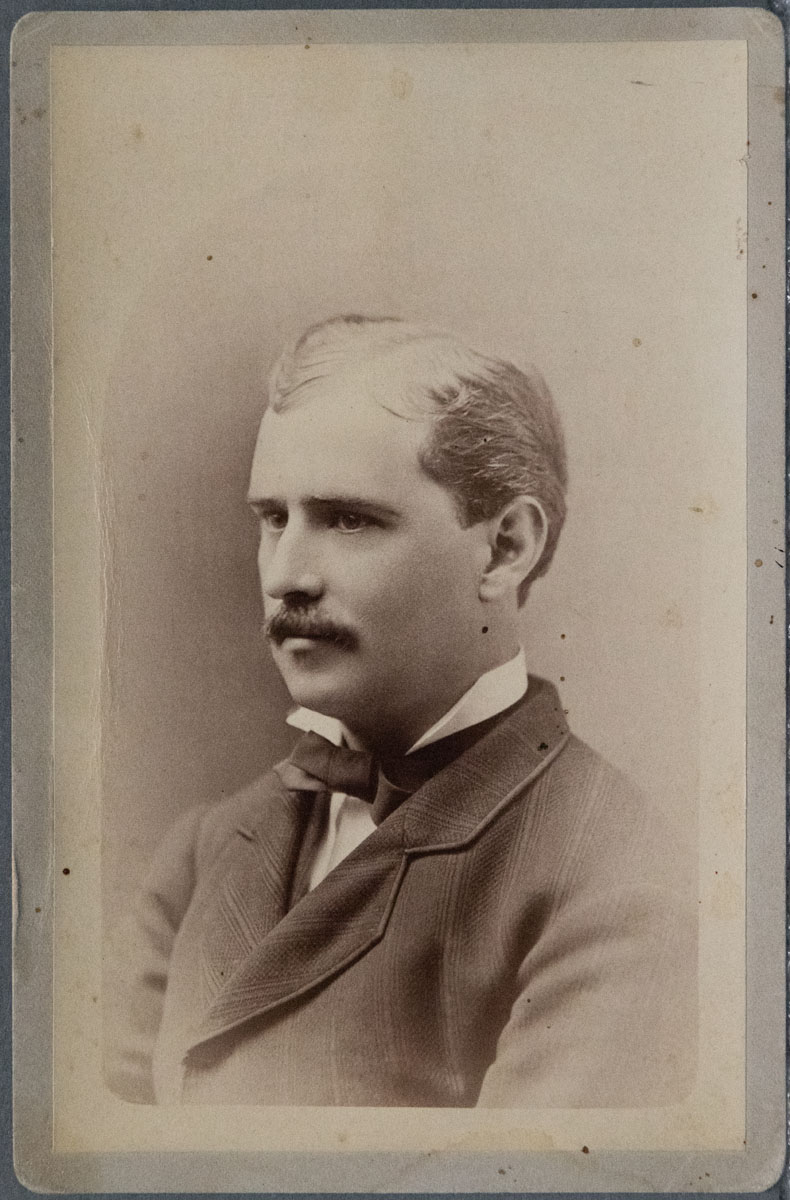
Bruce M. Leitch (Yosemite Archives YOSE-16713_20171114-_DSC0062)
Bruce McAlpin Leitch was described in 1889 as “Wawona’s solid weight.”12 Well-liked and respected, “Brucie” as he was often called in the newspapers, was a “renowned reinsman,”13 served as Justice of the Peace in Wawona from 1885 (14) through the 1890s, and in 1896 set up shop in the log cabin at the upper Mariposa Grove processing and selling his photographs along with curios, cigars, and locally woven baskets.15 As part of this latter occupation, Leitch found himself a de facto protector of the grove, on one occasion called upon in his capacity as Justice of the Peace to try two men arrested for cutting bark from one of the trees.16 Leitch’s role at the grove was formalized in June of 1898, when the Yosemite Commission appointed him as sub-Guardian of the Big Trees.
Leitch evidently wintered in San Francisco at the Palace Hotel, and was active in the California Camera Club (which one day would include Ansel Adams as a member). On March 20th, 1910, after attending a luncheon perhaps in connection with the club, Leitch invited fellow member Herman S. Hoyt (also an accomplished photographer) to his rooms at the Palace to view some photographs. According to one report, “Just as Leitch had taken out the pictures and was descanting on their beauty, he put his hand to his throat, gasped for breath and fell dead on the floor.” 17
May S. Corcoran, a friend in Mariposa, penned this touching obituary and character sketch:
"San Francisco, March 22, 1910.
When the angel of death, breathing softly near Hon. Bruce M. Leitch as he stood in the pretty club room of the Camera Club Sunday afternoon, made him say to his friends, ‘I am dizzy; I will go down to the Palace [Hotel],’ and following lightly along Market street through the wide door he had entered so often, but would not enter again, up to his apartments where he was wont to examine his lovely photographs, pressed an icy finger on his heart chords, stilled them forever, Mariposa county lost one of her loyal citizens.
He was one of those geniuses whose simple manner, cheerful disposition and unselfishness testified to his brilliant worth. To all he met he gave more than he received. Gave lavishly of sympathy, cheer and affection. Never complaining, never resenting lack of appreciation.
One knew and loved him as he deserved—his mother. When she died about seven years ago, he went on with life in that same gentle way, never obtruding his grief on any one. But a sparkle had gone from his wit, a hollow tone sounded under his gay words, a little habit of forgetting when he was expected to be entertaining became apparent to those who were accustomed to laugh with him. He, the man who lived for others, was quite alone and lonely. You vaguely, impatiently, perhaps, felt his loneliness. You wanted to laugh, perhaps, and wondered why; when he tried, and he always did try, he did not make you.
For a number of years he held the positions of guardian of the Mariposa Big Trees and justice of the peace for the Wawona township. For both positions he was well qualified and filled them honorably.
Many gay parties will miss his presence at the pretty log, moss-trimmed studio in the grove, where his real life was spent, dreaming, studying, working at his photographs, while the light side of a deep nature was alone shown to the world. He was a good man, an author and an artist. His mother was a sister of the late Mr. Henry Washburn, known in literature as Jean Bruce Washburn, and of the equally sweet poetess, Mrs. J. J. Cook. Three talented women. He leaves a sister in New York, and several cousins in San Francisco, among them J. J. Cook and Mrs. Charles Higgins.
He was a native of New York, about 54 years of age.
The funeral services will be held in King Solomon’s temple, Fillmore street, tomorrow afternoon at 3 o’clock, under the auspices of the King Solomon lodge of Masons. D. J. Foley and Dr. H. E. Minor will represent the Mariposa lodge, of which Mr. Leitch was a member.” 18
The cause of his death has not surfaced, but the cryptic words on his funeral record, “Stomach to chemist,” indicates there would be further analysis to discover a possible cause.19 Leitch’s estate went to his only surviving heir, his sister, Katie Bush of New York, including the Leitch Wawona Homestead.
Not long before his death, Bruce Leitch had submitted to Yosemite National Park his yearly application to sell photographs and curios at the Mariposa Grove, along with a reported fee of $50. The Modesto Bee reported on this, six months after Leich died:
“U.S. TREASURY DID NOT LET THIS GET AWAY
Washington, Sept. 21.—An instance in which the government placed a tenacious grip on $50 has a place in current treasury records. It shows that B. M. Leitch paid $50 for a license to sell curios and photographs in Yosemite National park for one year beginning January 1, 1910. He was given the privilege of occupying a cabin in the Mariposa big tree grove. Leitch died in April [sic] before he had opened his place of business for the year. As no goods had been sold under the license and it was non-transferable, the administrator of Leitch’s estate thought that the government would be willing to refund the license fee of $50. He applied to the treasury officials for the money but the only answer they could make was that there was no law authorizing a refund in such cases. Leitch’s death revoked the license but that invoked no drawback. In May the privilege that had been held by Leitch was sold to E. N. Baxter, who paid $50 for a year’s license. At last accounts Baxter was in good health.”
Bruce Leitch and Ed Baxter had known each other and worked in the same circles for almost two decades. One year after the establishment of Yosemite National Park, in 1891 the U.S. Cavalry were completing their first season enforcing park regulations, having made their base of operations in Wawona. Shortly before leading their seasonal return to the Presidio in San Francisco, it was reported that Captain Abram Epperson Wood joined Leitch and Baxter in Mariposa “for a couple of days this week, on some legal business.” 20
Ed Baxter would not only carry forward Leitch’s legacy of making photographs and selling curios at the Mariposa Grove, but would likely provide the link to the future purchaser of the Leitch Homestead. 21
Meanwhile, of the next few years at the Leitch Homestead, Tom Philips quotes Hattie Bruce Harris: "Joe MacKensie or MacKenzie had fled France at the age of 14 to evade military service of seven years. Came a tramping into the hills, Father [Albert O. Bruce] hired him to cut wood and as general help around the place. He spoke seven languages, so father told him to teach us French and we learned a few words. … He lived in the Katherine Leitch house until he was removed from the hills and taken to the County Hospital where he died…” As an aside, a single, intriguing record survives of a Joseph McKenzie, though, if he was the McKenzie referred to by Hattie, he would have been close to 100 years old:
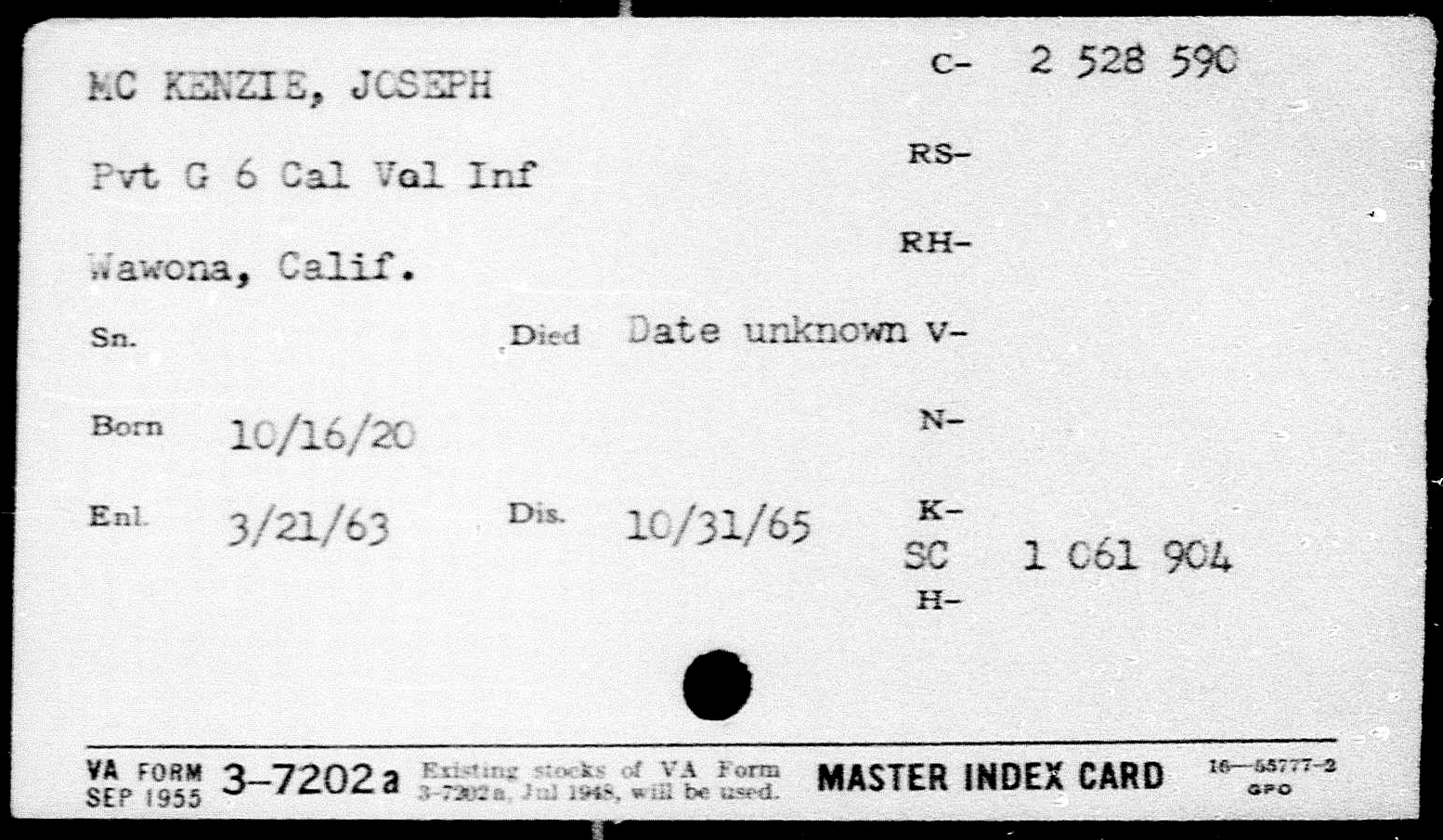
When this Civil War veteran of the California Volunteer Infantry lived in Wawona remains to be unearthed. 22
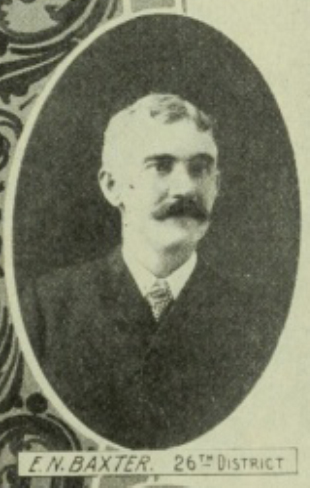
Ed Baxter
Edward Norton Baxter was born on June 6, 1863, to David and Nancy Baxter of Sonora, California.23 His dad arrived in that town from New York in 1856, was a miner, and had served as sheriff. As mentioned earlier, Ed shows up in Wawona by 1891; in 1897 he ran the Wawona Hotel store, worked as bookkeeper for the company, and for a few months in the spring of 1900 represented the hotel as a tourist-agent in Los Angeles.
Returning to Wawona in July of 1900, Baxter announced his candidacy for State Assembly on the Democratic ticket. 24 According to the 1907 California Blue Book, “Baxter…received a common school and business college education; is a bookkeeper with residence at Wawona, Mariposa County; elected Member of the Assembly from the Twenty-sixth District, November 4, 1902; was a clerk of the minority in the Assembly during the session of 1905; elected Member of the Assembly from the Twenty-sixth District, November 6, 1906.”
It’s likely that Baxter’s campaign was helped along by a friend and fellow Democrat from his hometown of Sonora, Senator John Barry Curtin. Curtin and Baxter agreed that the state of California should retain possession of Yosemite Valley and the Mariposa Grove, even though the surrounding land had been federalized as Yosemite National Park. In January, 1905, Curtin was the sole opponent to a bill to recede the state-run lands to the federal government:
“Senator Curtin made a stirring appeal against recession, basing his argument mainly on the fact that the state should not give up its possession but should demand that the legislature vote appropriations sufficient to maintain its park.” 25
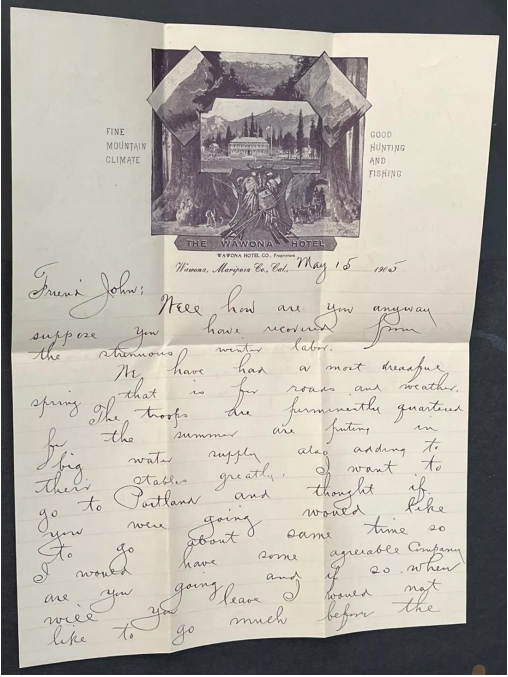
May 15, 1905 Letter, Baxter to Curtin first page (author collection)
Four months later, Baxter wrote to Curtin from Wawona, offering to facilitate communication between Curtin and the new superintendent of Yosemite National Park:
“May 15, 1905
Friend John:
Well how are you anyway – suppose you have recovered from the strenuous winter labor.
We have had a most dreadful spring, that is, for roads and weather.
The [cavalry] troops are permanently quartered for the summer – are putting in a big water supply, also adding to their stables greatly. I want to go to Portland and thought if you were going would like to go about [the] same time so I would have some agreeable company - are you going and if so when will you leave? I would not like to go much before the first of July but might go before.
Will you be in the [Yosemite] Valley in June? You better come and not break your record.
Bunkers got it quick – don’t see how the balance can possibly get out of it, do you?*
Anything I can do for you with Benson – Supt. Yo[semite] Park – let me know; he is a personal friend.
Travel is quite good considering roads. Hoping to hear from you soon regarding trip to Portland.
Yours as ever,
E. N. Baxter (26)
*This refers to Senator Harry Bunkers, who had just been expelled from the Senate for accepting bribes. “The balance” probably refers to three other Senators similarly expelled. Bunkers was sentenced to five years in San Quentin. While serving his sentence, the April 18, 1906 edition of the San Francisco Call reported that Bunkers’ house in San Francisco had burned down the previous day. Readers that morning probably didn’t take much notice of the news, though, being otherwise occupied by that morning’s Great San Francisco Earthquake. 27
After passage of the recession bill, it was time for Baxter’s friend, Maj. Harry C. Benson, to move his headquarters (as Acting Superintendent of Yosemite National Park) from Wawona to Yosemite Valley. After pulling out with his troops on Sunday, July 8, 1906, Benson wrote to Ed Washburn of the Wawona Hotel, “I had intended getting up to say goodbye to you all at the hotel, and as a matter of fact had not intended leaving on Sunday last as I had made arrangements to go to the Big Trees on Sunday. I particularly wanted to see you all to thank you for your uniform kindness and courtesy to us all at the Camp, which kindness on the part of all at Wawona has tended to make our stay there most pleasant.”
Benson was succeeded as Acting Superintendent by Maj. William W. Forsyth in 1908. The next year, Forsyth took quite a different tone from his predecessor when writing to Ed Washburn. Evidently Ed Baxter, still a member of the state assembly and working for Washburn as a bookkeeper and transportation agent, was pushing to rescind the recession bill along with Senator Curtin. Forsyth wrote to Washburn: “Have you noticed what a fool Baxter has been making of himself at Sacto [Sacramento]? Wonder what he thinks he can gain? No more chance of going to heaven than of having the Yosemite receded to the State. Of course his play is to stand in with Curtin.”
Senator John Roland Tyrrell
John Roland Tyrrell, a Republican representing Nevada City, California, was elected to the State Senate in 1900. Tyrrell was born in Cornwall, England, from where he and his parents joined the thousands of Cornish that emigrated to Nevada County. One thing Senator Tyrrell had in common with Assemblyman Baxter and Senator Curtin was their upbringing among the gold miners of the Sierra Nevada foothills. That, along with serving together in the state legislature, creates a likely scenario by which Tyrrell could learn that property of Baxter's old friend Leitch was available for purchase.
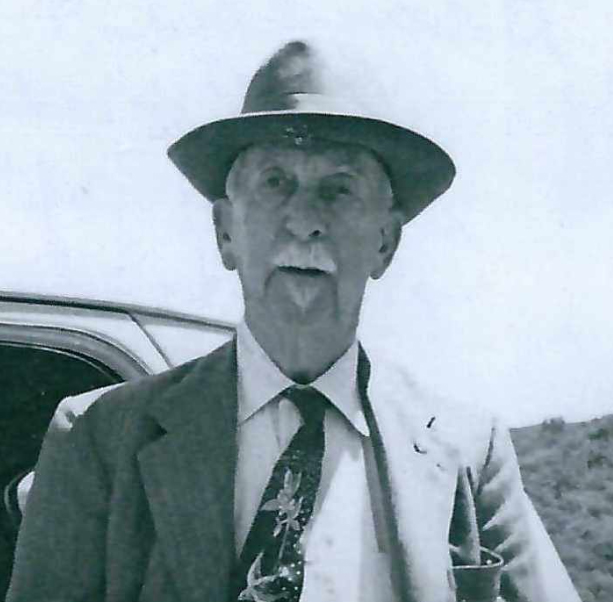
John R. Tyrrell
 Portion of map, 1930, showing Tyrrell ownership of former Leitch Homestead. (Yosemite Map Collection, item #YOSEAR000860; https://npgallery.nps.gov/YOSE/AssetDetail/dbdf2a0a-70b9-426f-8f13-a2ea162dbe84)
Portion of map, 1930, showing Tyrrell ownership of former Leitch Homestead. (Yosemite Map Collection, item #YOSEAR000860; https://npgallery.nps.gov/YOSE/AssetDetail/dbdf2a0a-70b9-426f-8f13-a2ea162dbe84)In June of 1924, Katie Leitch Bush’s husband died; she remained in New York until her death in 1942. According to the research of Yosemite National Park historian Bob Pavlik:
“On October 17, 1927 Kate Bush granted the property to John R. Tyrell and Thornton Jackson. Tyrell held a two-thirds interest in the property and Jackson, one-third. One month later Jackson conveyed his one-third interest to Tyrell for the sum of ten dollars. On June 6, 1929 Tyrell, ‘For $1 and the further priceless consideration of friendship and loyalty of the party of the second part [Jackson],’ conveyed to Jackson the northwest ¼ of the north half of the south half of Section 35, ‘Being the same premises which the party of the second part herin has occupied and used as a home for the past twenty (20) years or more.’ If this is true, it would mean that Jackson and Leitch would have been occupying the same property at the same time. Being that they were both bachelors this was probably not uncommon nor unusual." 28
The 1929 gift of land to Jackson was recorded three months later, on September 13. (29) If Jackson had occupied the cabin since 1907 or earlier, as implied by Tyrrell, while he may have shared the cabin with Leitch, it is more likely that Leitch would spend the entire summer season in the cabin he leased in the Mariposa Grove, and, as previously shown, spend his winters in San Francisco.
Tyrrell was married, had four sons, and lived in San Francisco. His oldest would die in 1934, and his wife in 1937, after which he would remarry in 1940. According to his neighbor, Malcom Fulmer:
“Senator Tyrrell [Malcom pronounces it “TER-ell”] – he was from San Francisco – bought all that land on that side of the river. Quite a bit of it. And he lived right across [the river], back of Jackson’s house; there used to be a bridge here, footbridge, the Indian Bridge they called it. When I walked from here to grammar school, I crossed that bridge; it washed out, and they built two more since and they washed out.
He [Jackson] and Senator Tyrrell got to be good friends and Senator Tyrrell let him handle his property for him, then he broke it up, you know, and Jackson would show people the property.” 30
In January of 1930, the Merced Express reported, “the Wawona Homesite Co., under the supervision of Thornton Jackson, was also taking advantage of the freezing weather to put up many tons of ice in their own ice house for the summer needs.” In the census that year, April 26, Jackson lists his occupation as “Salesman – Real Estate.”
Handwritten notes on the map indicate that in 1930 Tyrrell owned all 160 acres shown above, excepting several parcels sectioned out of the western ¼ of the property totaling 28.53 acres. Maps from 1933 and 1942 show buildings south of the river on Tyrrell’s property consistent with Fulmer’s description.
SDA’s Camp Wawona
The eastern ¼ (40 acres) appears in the 1930 map to have been designated for sale to the “Central California Conference Association of Seventh Day Adventists,” (“SDA,” as commonly abbreviated). A summer retreat owned and operated by the SDA Church, Camp Wawona is now located within that eastern ¼ of the former Leitch Homestead. According to an article by Forrest and Suzie Robertson in the Pacific Union Recorder, Camp Wawona was established in 1929 when seventy-two worshippers congregated along the South Fork of the Merced near the proposed site, and in 1930 at the opposite, south-west corner of the above map on a parcel that would be purchased by SDA member Walter Baker. The article further states that the SDA Central California Conference purchased the first 5 acres of Camp Wawona’s current location in 1931, and by 1943 had acquired a total of 30.45 acres.
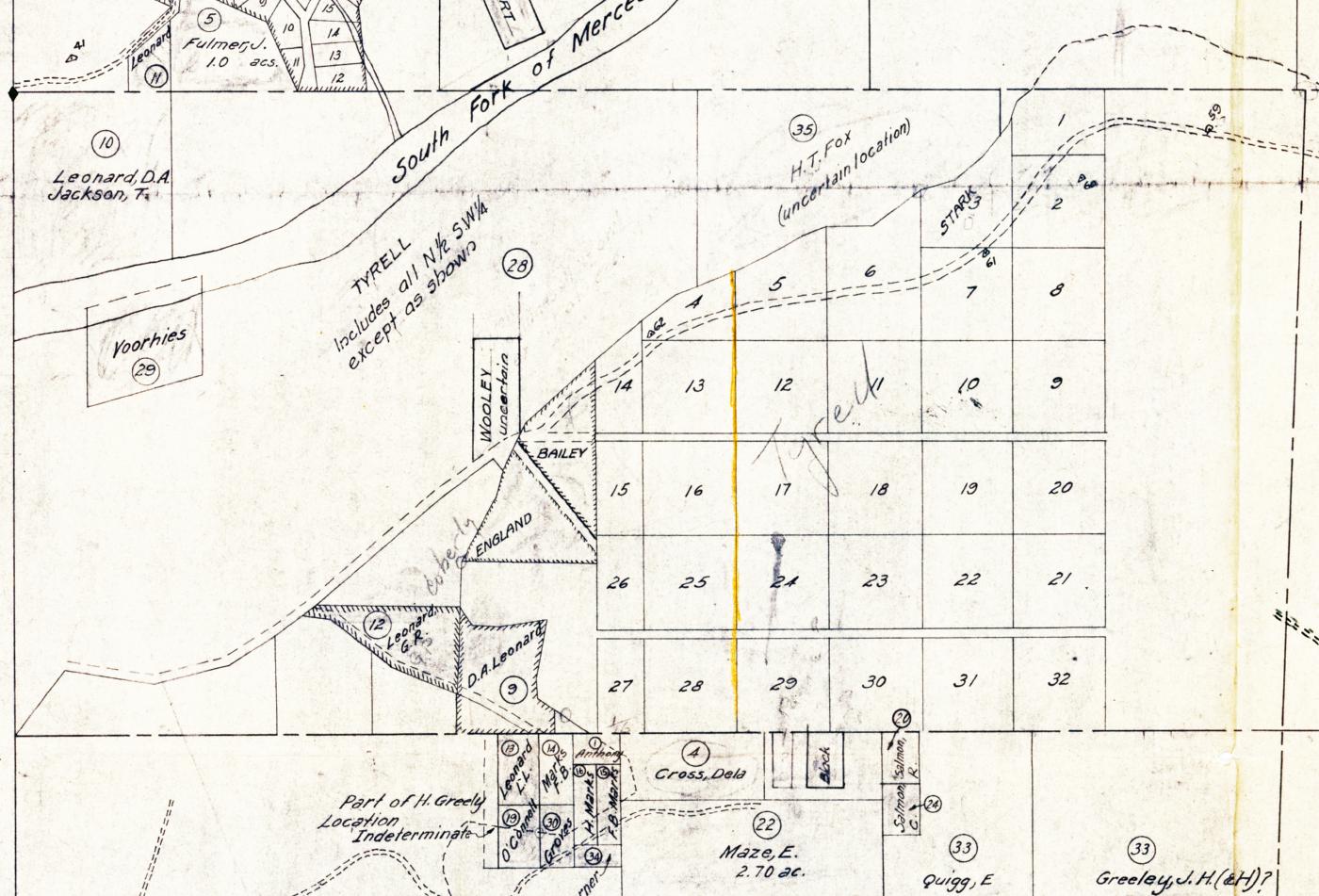 Portion of map, 1930, showing west ¼ of former Leitch Homestead, including parcels sold to brothers Dennis and George Leonard, and Dennis’ son Leland Leonard, and others. (Yosemite Map Collection, item #YOSEAR000860; https://npgallery.nps.gov/YOSE/AssetDetail/dbdf2a0a-70b9-426f-8f13-a2ea162dbe84)
Portion of map, 1930, showing west ¼ of former Leitch Homestead, including parcels sold to brothers Dennis and George Leonard, and Dennis’ son Leland Leonard, and others. (Yosemite Map Collection, item #YOSEAR000860; https://npgallery.nps.gov/YOSE/AssetDetail/dbdf2a0a-70b9-426f-8f13-a2ea162dbe84)Greeley and Quigg
Two years before Catherine Leitch initiated her homestead claim, just along its southern property line, an earlier homestead had already been established by Roscoe Wellington “Rock” Greeley on Sep. 8, 1885. Greeley, a stage-driver who also hauled freight between Wawona, Mariposa, and Yosemite, wedded Mary Van Campen in 1891 – Mary was a cousin of Aziel Barnes Van Campen and Azalia Van Campen Bruce. “Rock” died in 1909, leaving the homestead and two children to Mary who, five months later in San Francisco, married a gold-miner and sawmill operator from Rawhide, California (near Sonora), named Ed Quigg (his full name was George Henry Edward Quigg). Quigg, in partnership with his two step-sons, Horace and John Greeley, established and operated a sawmill business on the Wawona property for about two decades, closing shop in 1935. (31)
Marks and Leonard
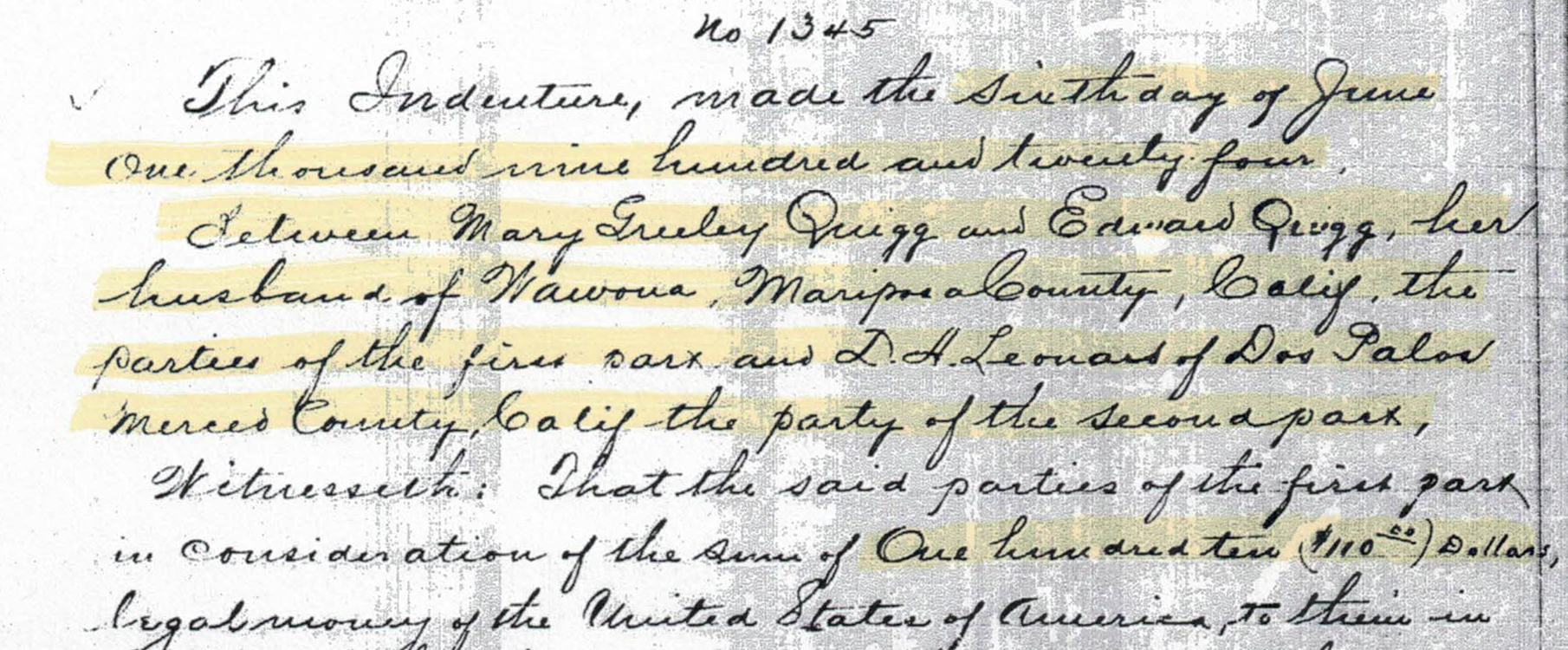
June 6, 1924 Quigg to Leonard (excerpt)
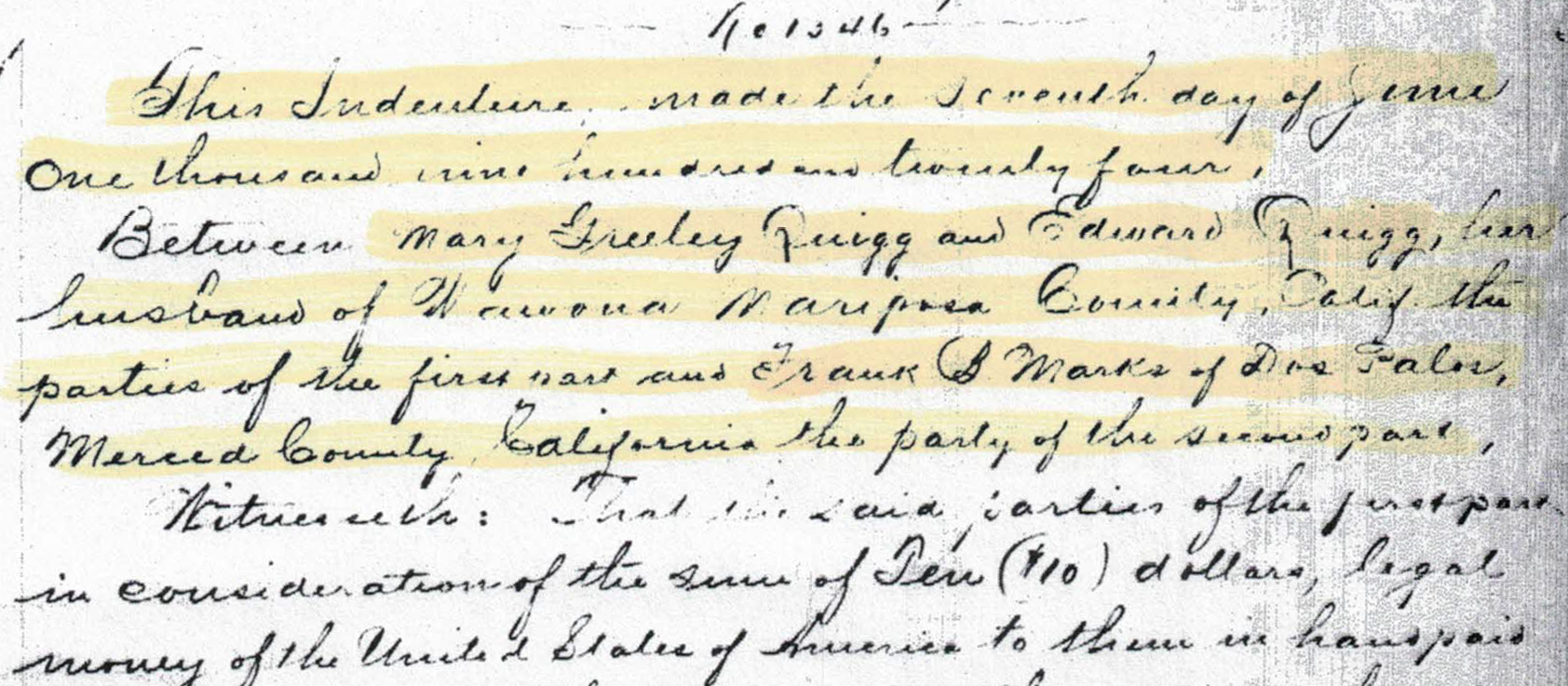
June 7, 1924 Quigg to Marks (excerpt)
In June of 1924, Mary and Ed Quigg began to parcel off some of their property; two of the first to purchase land were D. A. Leonard and Frank B. Marks. 32
Frank Marks first visited Yosemite with his family when he was eleven-years-old, in 1881, and retained a connection with Yosemite for the rest of his long life. In a recorded 1953 interview, Frank recalled that he’d started bringing his family to Wawona around 1918, “…used to rent a cabin from Mrs. Quigg.” Leaving his family at the cabin, Frank would head to his farm 100 miles away in Dos Palos to work, and visit his family in Wawona on weekends. He recalled, “it wasn’t until I retired about seven years ago [1946] that I spent really any time there [in Wawona].” Marks described the land purchase: “Oh it’s a wonderful place. My wife picked it out … when there was nobody in there except Quiggs. They had 160 acres, but they had never sold anything at all. So we had the choice of it.” 33
In the 1870s, Frank’s father, Bernhard Marks, had founded a farming colony that would evolve into the city of Fresno. In the early 1890s, the elder Marks worked with Henry Miller, founder of the behemoth Miller & Lux cattle operation in the central valley, to establish another such colony that would become the town of Dos Palos. To help seed the project, Bernhard’s son, Frank, moved there with his family to start a farm. 34
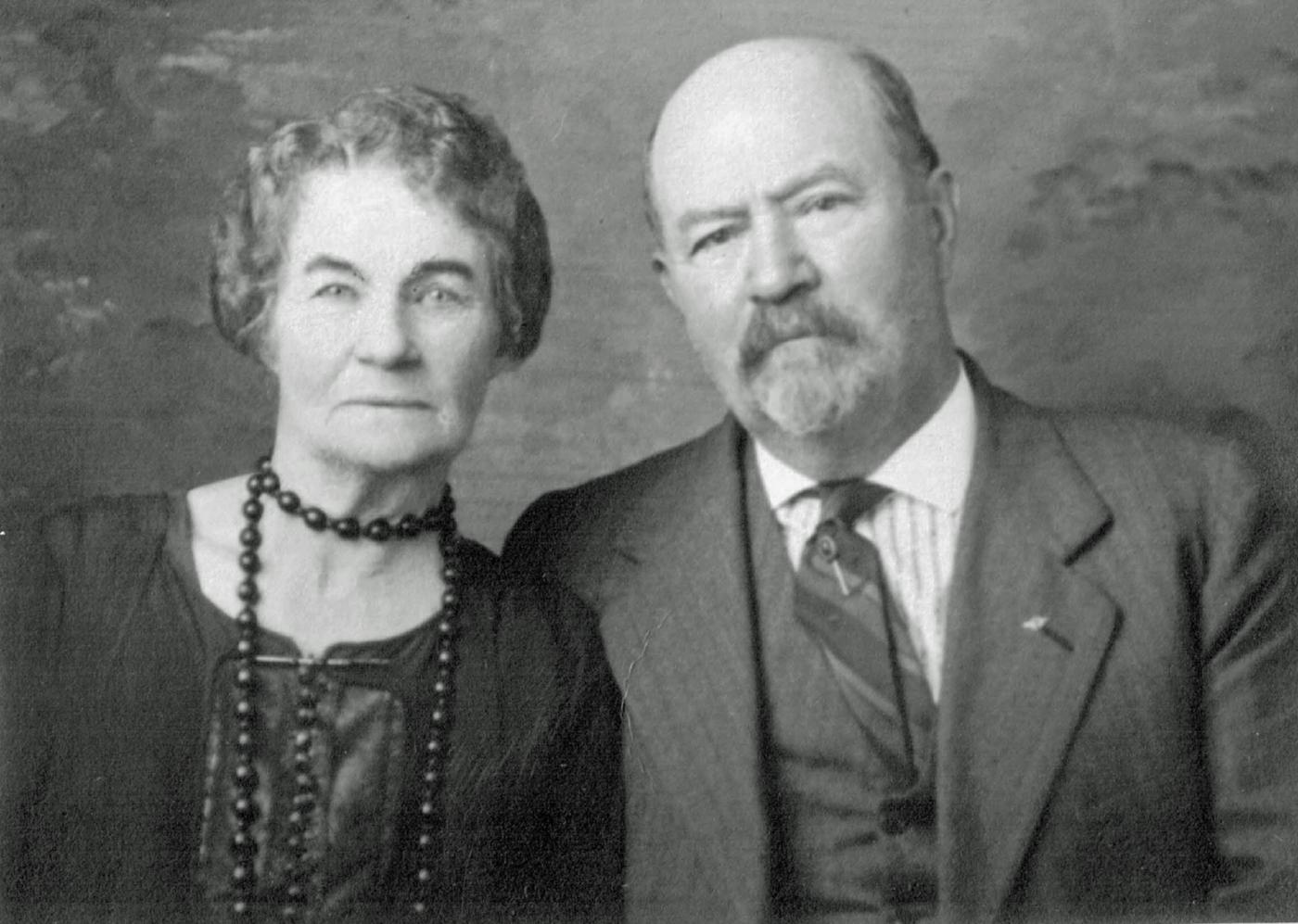
Marie and Dennis Allen "Dan" Leonard (courtesy Dan Nelson)
Just as their venture was unfolding, around 1892 a young easterner named Dennis Allen Leonard took a job with Miller & Lux. Leaving his family in Utica, New York, Leonard’s presence in California first appears in a Bakersfield voter-registration record from 1884, listing him as a laborer. He was one of some nine siblings, whose parents emigrated from Ireland to Utica by 1865, where their father worked for the New York Central Railroad, and later as a farmer. 35
During his 23 years with Miller & Lux, Dennis (remembered by his family as “Dan”) had risen to Superintendent, retiring from the company in 1915 after developing their holdings to become “one of the foremost rice growers of the San Joaquin valley.” 36 He continued to manage his own sizable properties while president of the Farmers Merchants’ Bank of Dos Palos.
Frank Marks, perhaps inadvertently tracing his fathers’ footsteps as a colonizer, inspired his Dos Palos neighbors to make their summer homes in Wawona. Technically, though, Dan Leonard was the first to sign his purchase from Ed and Mary Quigg, on June 6, 1924. Marks signed on June 7. Close on their heels were Frank’s brother, Howard, Dan’s brother George, and Dan’s son, Leland Lawrence Leonard – all represented at the bottom of the above map.
The 1930 map, below, likely indicates a joint-tenancy agreement between Dan Leonard and Thornton Jackson; when Leonard died in 1934, his wife and son, Leland Lawrence, inherited the part-ownership, which they later conveyed to Jackson.
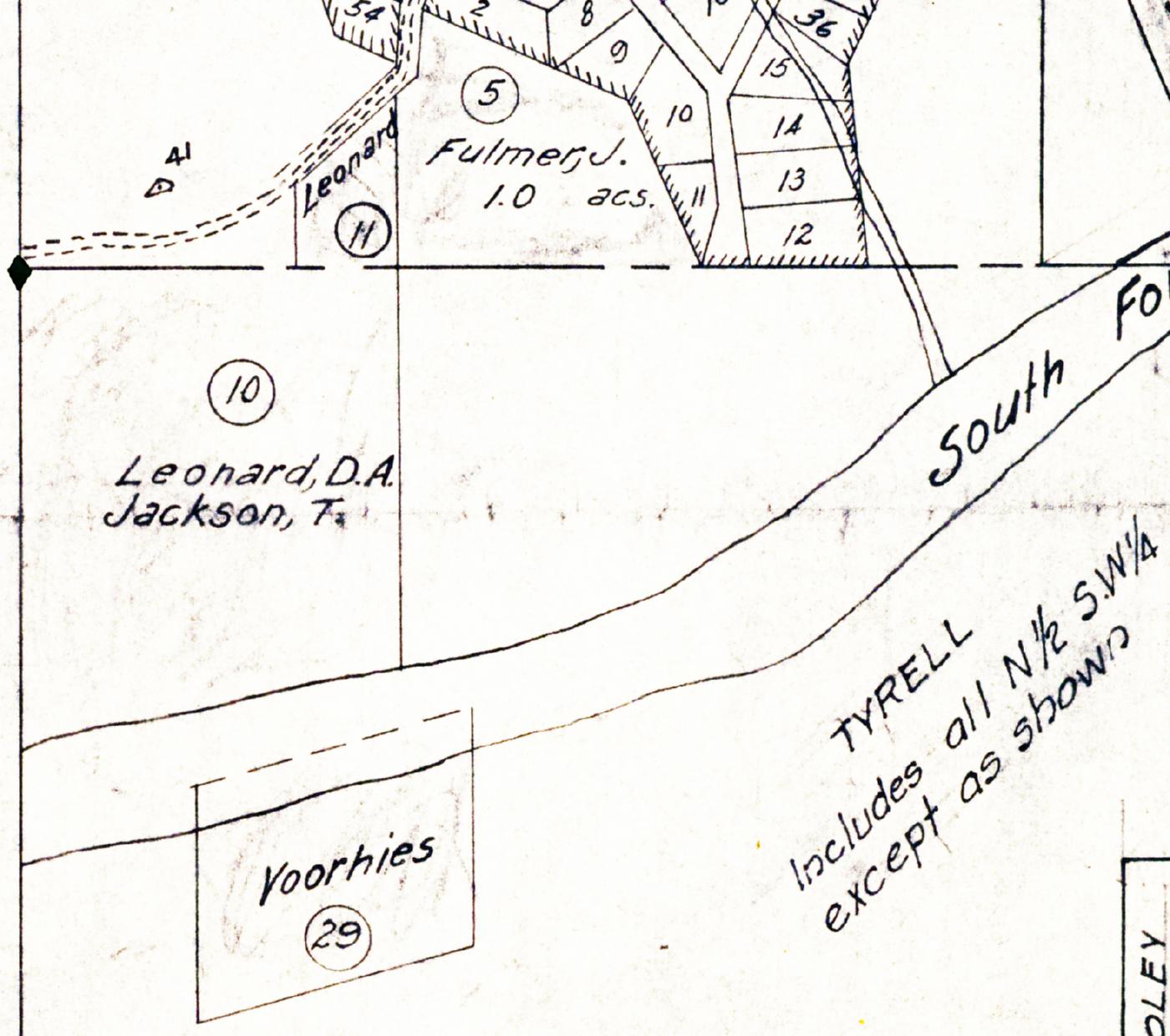
Portion of map, 1930, showing northwest portion of former Leitch Homestead, with Leonard/Jackson parcel between Chilnualna Rd (on the north) and South Fork Merced River (on the south). (Yosemite Map Collection, item #YOSEAR000860; https://npgallery.nps.gov/YOSE/AssetDetail/dbdf2a0a-70b9-426f-8f13-a2ea162dbe84)
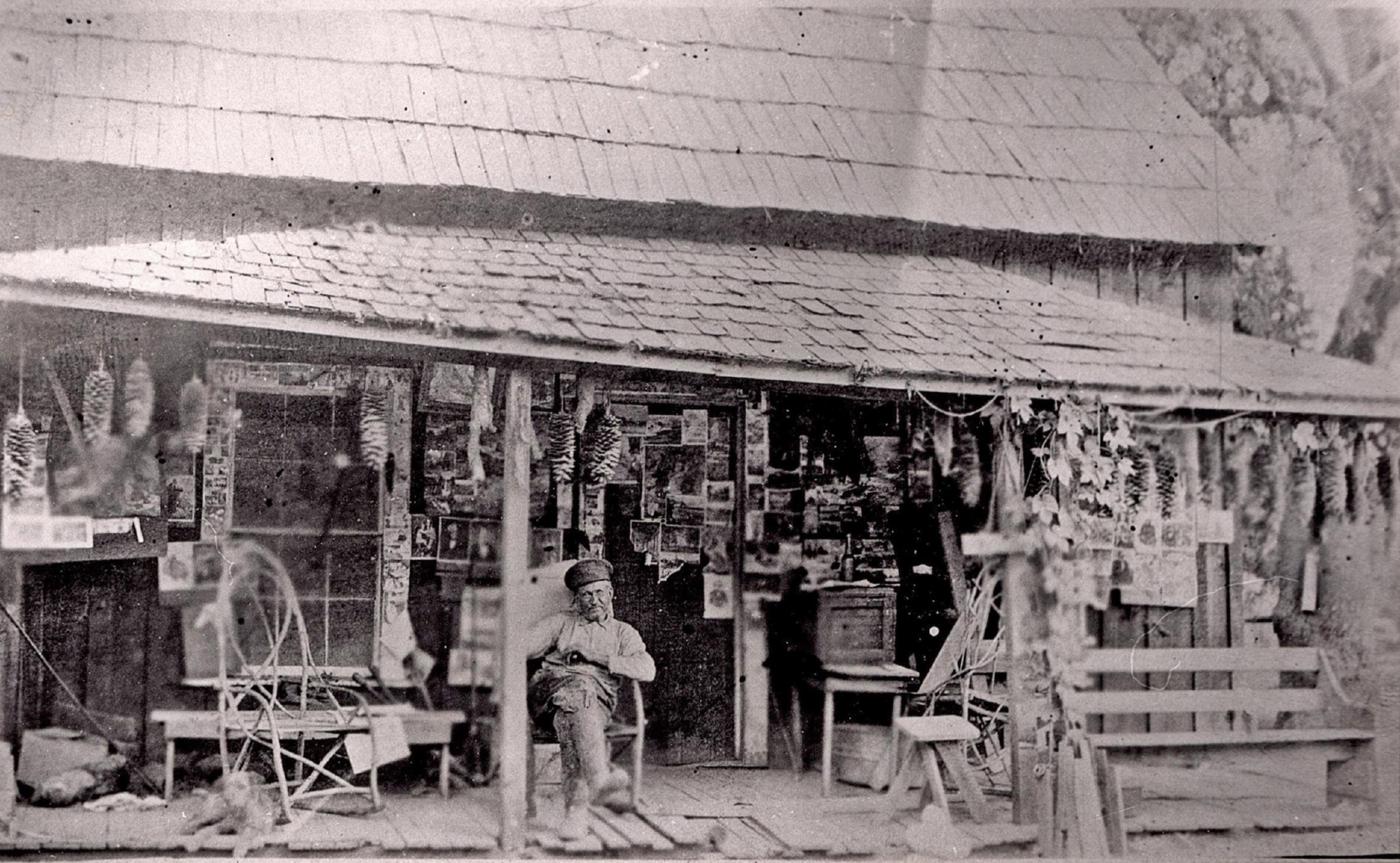
Thornton Jackson and dog at Leitch Homestead House (Ed Mee Collection)
Thornton Jackson & Lynn Butler
Though Tyrrell estimated Thornton Jackson’s occupation of the Homestead House as 1907 or earlier, Jackson makes his first documented appearance in Wawona with an advertisement in the 1916 Mariposa Gazette: 37
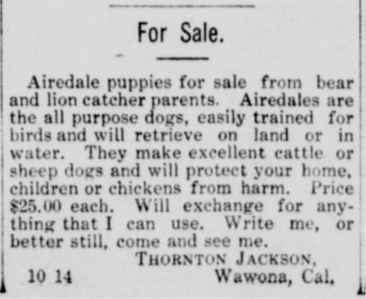
In the 1920 Census, Jackson indicated to the census-taker in January that he was renting the house and property (from Kate Bush), sharing it with his partner, Frank McDonald, practicing “general farming,” and guiding tourists on fishing and hunting trips. McDonald, who had partnered with Jackson in December, was described as “despondent and in poor health,” and took his own life that spring. Not long after the tragedy, Jackson teamed up with another Wawona resident, Lynn Butler. 38 Butler, born in Missouri in 1883, was a farmer in Mariposa in 1908, and by 1917 lived in Wawona working at the nearby Miami Sawmill as a shake-maker. According to neighbor, Albert Gordon, Butler played guitar and liked to make up parodies of popular songs. 39
Jackson worked a variety of jobs for Wawona Hotel manager Clarence Washburn – cutting ice, clearing the water ditch, working in the hotel garden, helping to build the hotel’s golf course in 1917, and regularly working at the polling-place – the local schoolhouse – during elections. 40
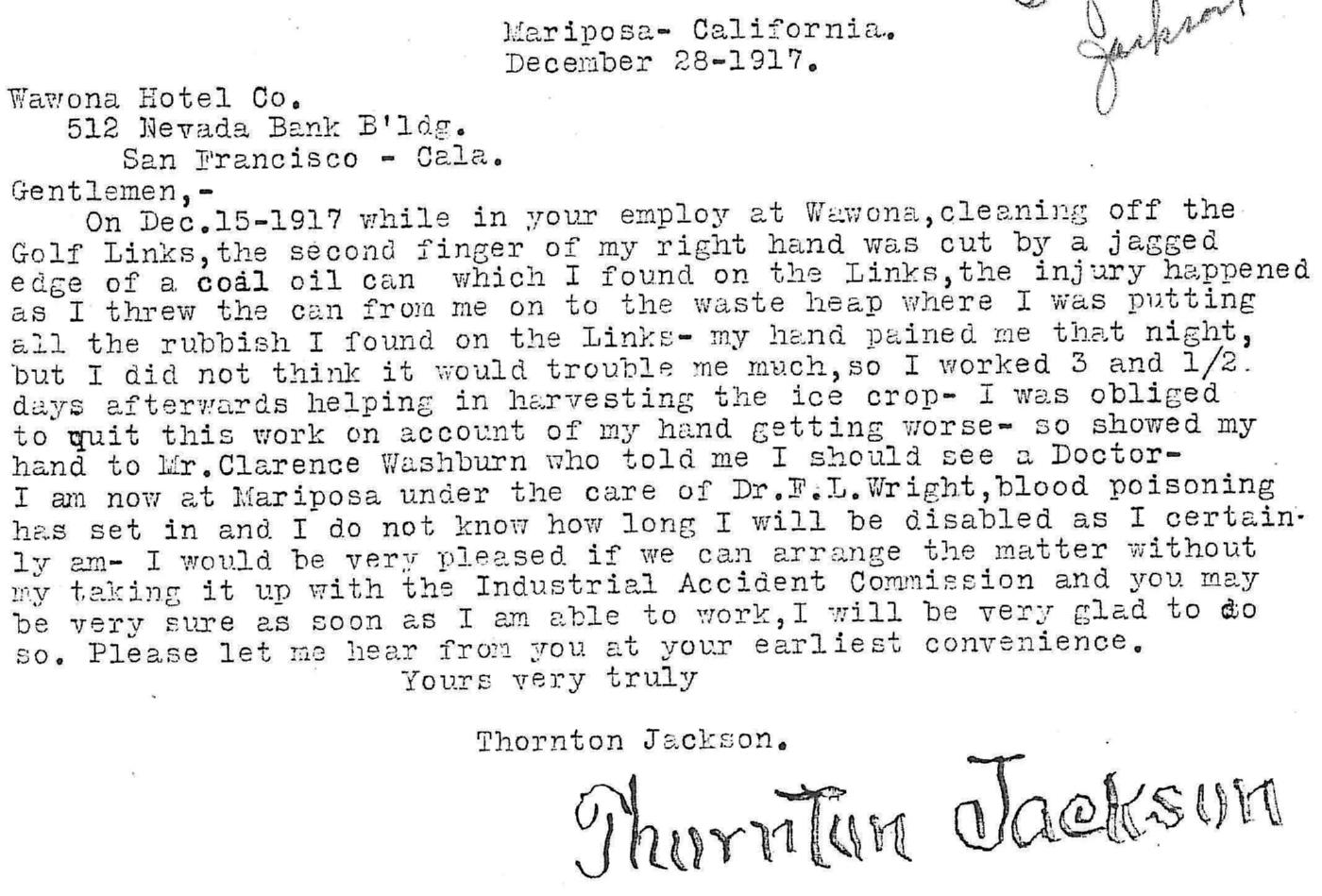
Accident report signed in Jackson’s distinctive printing style. Norman May recalled that Jackson was missing fingers on one of his hands.41
As a girl, Clarence Washburn’s daughter, Wawona, would often visit Jackson to borrow books from his large collection. As a writer herself, she once penned a fanciful characterization of Jackson and Butler for a potential novel:
"Old Jackson and Butler
The one-time lawyer, living surrounded by books and pigs -- wise of eye and mind, but hated and distrusted. And Butler, simple, servile, loving music and slave to Jackson. Who was Jackson? What had he done to bring him to the little valley as a recluse? What grudge did he hold against the world? And Butler, why did he take Jackson’s abuse? What hold did the old man have on him? Was his music all he needed, or did he yearn for more?" 42
Wawona Washburn also recalled Jackson’s Airedales, and that he regularly “ordered a 25 lb. sack of dog food for his hounds...even in winter when having a hard time getting over the mountain.” Jackson’s neighbor, Norman May, corroborated Wawona’s character sketch:
“Jackson had something on Butler – he made a virtual slave of Lynn. Back in the old days [we] had a shed out here with old cotton mattresses which were still there. Lynn, I remember, more than once came to our house – if he wasn’t in by nine o’clock Jackson locked him out, and Lynn wanted to know if he could come and sleep on those mattresses down there and he would crawl in between those cotton mattresses and sleep. All that Lynn got – they had a garden there, where the [Stauffer] house is now, and a little shed for tools – Lynn lived in that old toolshed shack after [Thornton died] – that’s all he got.” 43
Jackson’s neighbor, Jim Fulmer, appears on the above maps as “J. Fulmer.” Fulmer, his wife Elsie, and son Malcom, moved to Wawona in 1920. Jackson sold Fulmer some of his packing supplies and animals, and Fulmer went into business transporting hunting and fishing parties into the backcountry. In an interview, Malcom recalled:
“[Jackson] was a nice guy – he took a liking to me. That first winter [1920] I’d be out there playing in the snow all the time – he named me “Snowbird.” We don’t know anything about his background. But he had to have been here a few years [before us] because he had that pack outfit my dad bought.
Up the trail from the stables [Alder Creek trail] he had a mining claim on government land; he ran a fence around it, raised hay, had horses up there, about a mile, mile and a half. He raised hay for his horses, and grazed them, not a lot, just for his horses. Everybody was prospecting in those days.
Jackson had beautiful – never wrote in longhand, he printed, just perfect. And smart as a whip. He had a big old lock and chain on his door, and I’d go down and just run in there and he had a kitchen and a big old bed – it was up about this high – and it was just like going in a barn, crap all over the place.”
A 1934 blurb in the Visalia Times Delta confirms that Jackson maintained contact with Tyrrell, and that Tyrrell may have been helping Jackson financially through some health problems: 44
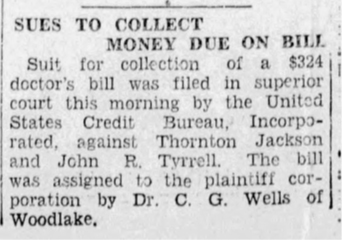
Norman May recalled that Jackson “used to invite us kids” to visit him:
“We’d walk home from school over the Indian Bridge and go by old man Jackson’s place and he’d be sitting out there on his porch, cowboy hat on, and he would talk to us kids. He said he was a drummer boy in the Civil War for the south. He would take us into his house … I looked down beside his bed one time; he would lay in bed, chew tobacco, and spit on the floor, and there was a mound of dried tobacco spit about that high alongside of his bed. He had chickens – the chickens would come in the house – he had an old-time bedstead with curlicues at the head – the chickens would roost on the foot of the bed and poop on the floor and the blankets.
Jackson finally built himself a new house in the meadow, off to the side there, and his new house burned down, and I still remember hearing him, sitting beside the road, saying “I’m ruined – I’m ruined!” It wasn’t too long after that that he died.”
Jackson died in Merced on March 11, 1939. His death record gave his age as 92 (born 1847), but census records in both 1920 and 1930 indicate he was born in 1862 or 1864 in North Carolina.

Portion of map, 1933, showing former Leitch Homestead.
(Yosemite Map Collection, item # YOSEAR001055; https://npgallery.nps.gov/YOSE/AssetDetail/a51b9c7a-ef75-4c1d-aaa2-538e094e4fb3)
In the above 1933 map, the blue hashmarks indicate lands to be sold by Tyrrell to the U. S. Government. On the right is a rectangle of land purchased for the SDA's Camp Wawona, and center-left can be seen where most of a subdivision proposed by Tyrrell would become part of Yosemite National Park.
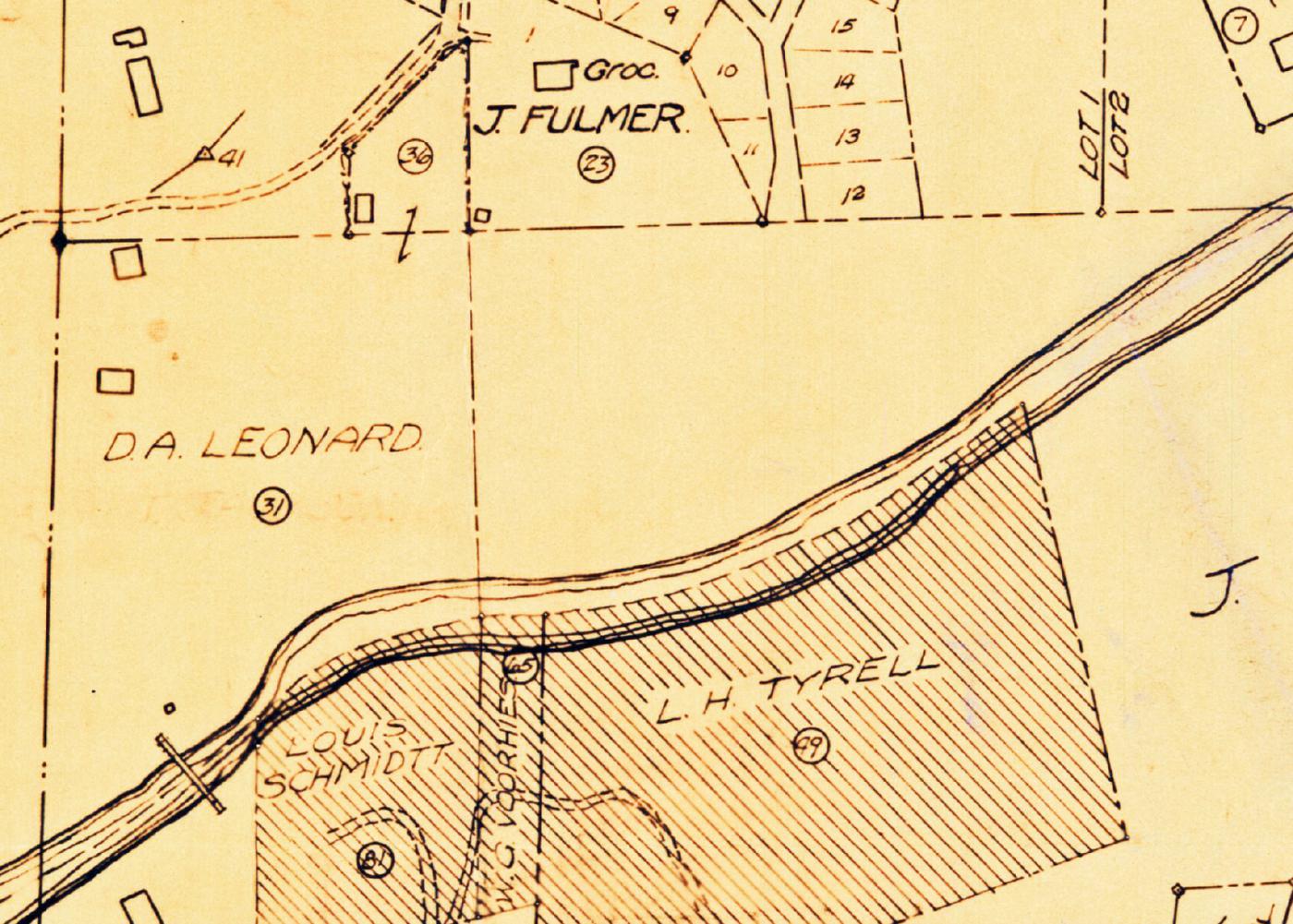
Portion of map, 1933, showing Jackson parcel (Jackson’s name erased) and Parcel No. 36 (formerly No. 11) to be joined with the lower parcel. (Yosemite Map Collection, item # YOSEAR001055; https://npgallery.nps.gov/YOSE/AssetDetail/a51b9c7a-ef75-4c1d-aaa2-538e094e4fb3)
Visible on the map (above) are squares representing two structures; the one closest to the road, just inside the northern boundary of the former Leitch property, is the Leitch Homestead House – Jackson’s residence. On the river south of the house is shown the so-called “Indian Bridge,” a footbridge that washed away in a flood.
Sedlacek
Sedlacek
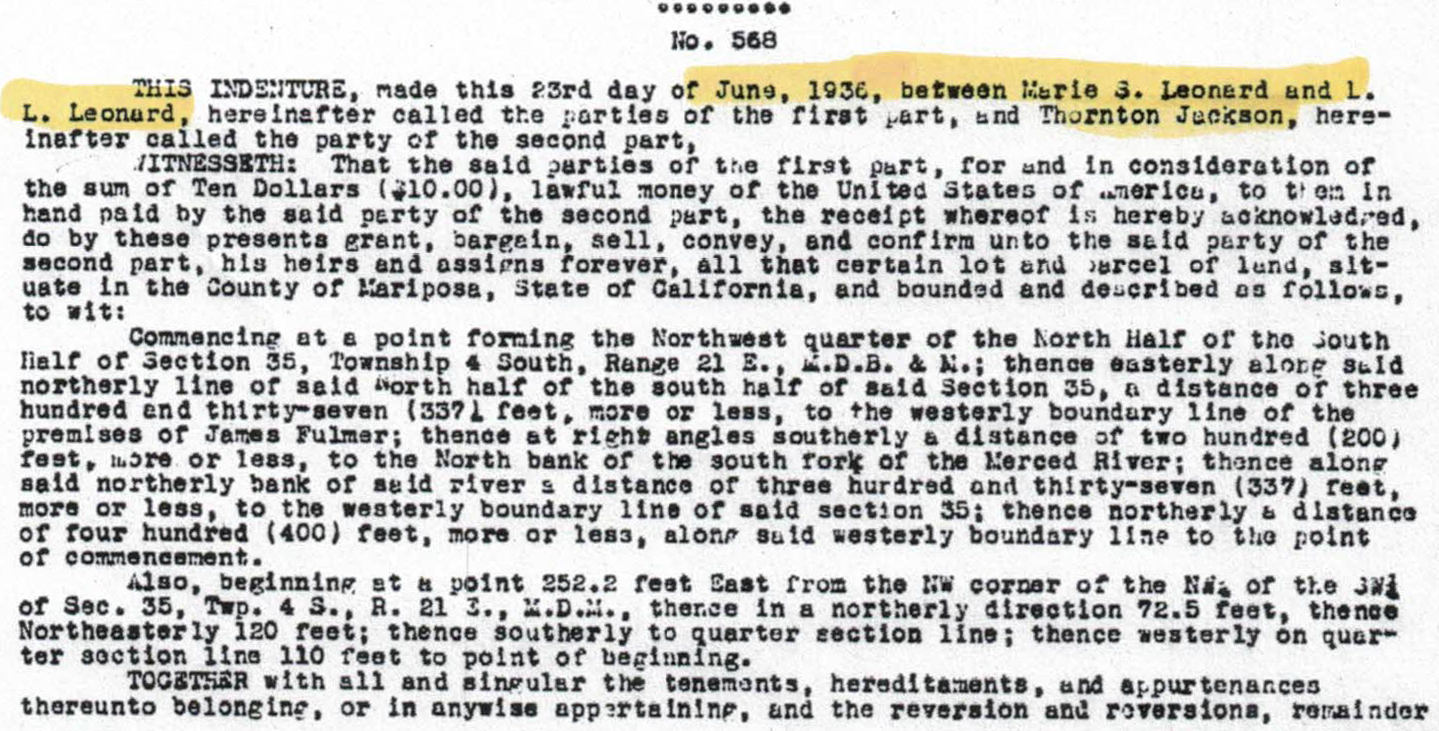
June 23, 1936 Leonards to Jackson (excerpt)
When Dennis Allen “Dan” Leonard died in 1934, his wife, Marie, and son, Leland Lawrence, appear to have inherited the joint-tenancy that Dan had shared with Jackson. On June 23, 1936, Marie and her son sold their share in the property to Jackson for $10, adding to it their adjoining parcel to the north, giving Jackson frontage on Chilnualna Rd.
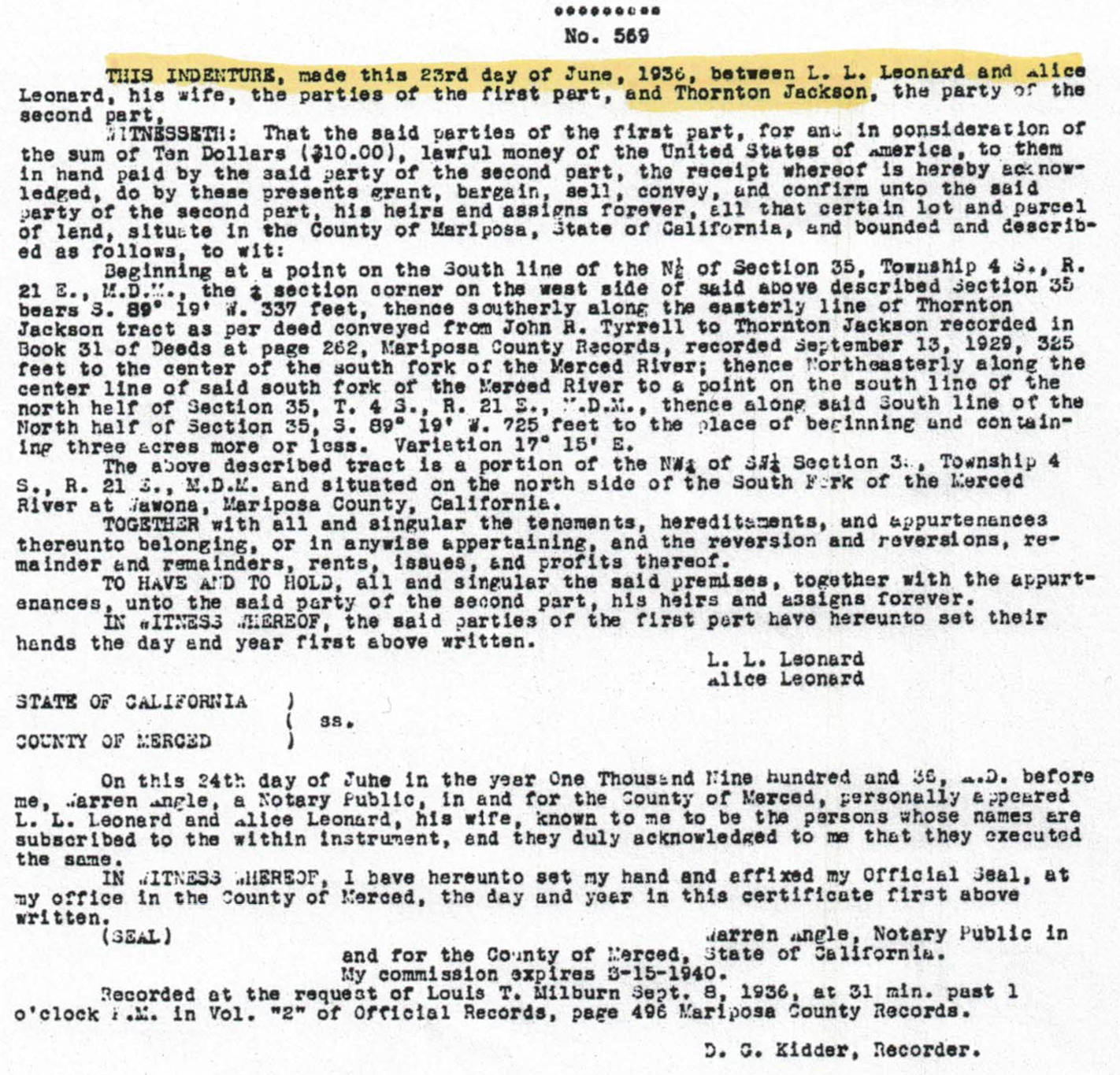
June 24, 1936 Leonards to Jackson
In a second transaction the same day, for another $10, they sold to Jackson another 3.84 acres adjoining the east line of his property, from the river to the northern boundary of the old Leitch homestead.

June 24, 1936 Jackson to Sedlacek (excerpt)
Immediately after that, in 1936 Jackson entered into a new joint tenancy agreement on the first parcel with a couple from Los Angeles, Milo and Julia Sedlacek. 45
Thornton Jackson died on March 11, 1939, leaving his portion of the Leitch Homestead and house to his joint tenants, the Sedlaceks. One of Jackson’s neighbors, Norman May, recalled that local residents were angered that Jackson had not left any of his property to Lynn Butler, who had roomed with Jackson for almost twenty years. Sometime after living in the "toolshed shack" near the homestead house, May recalled that Butler lived for a time in a cabin on the south side of Wawona. He appears to have acquired a small plot of land with a structure on it, just east of the Leitch Homestead House, shown in a 1948 map (shown farther below).
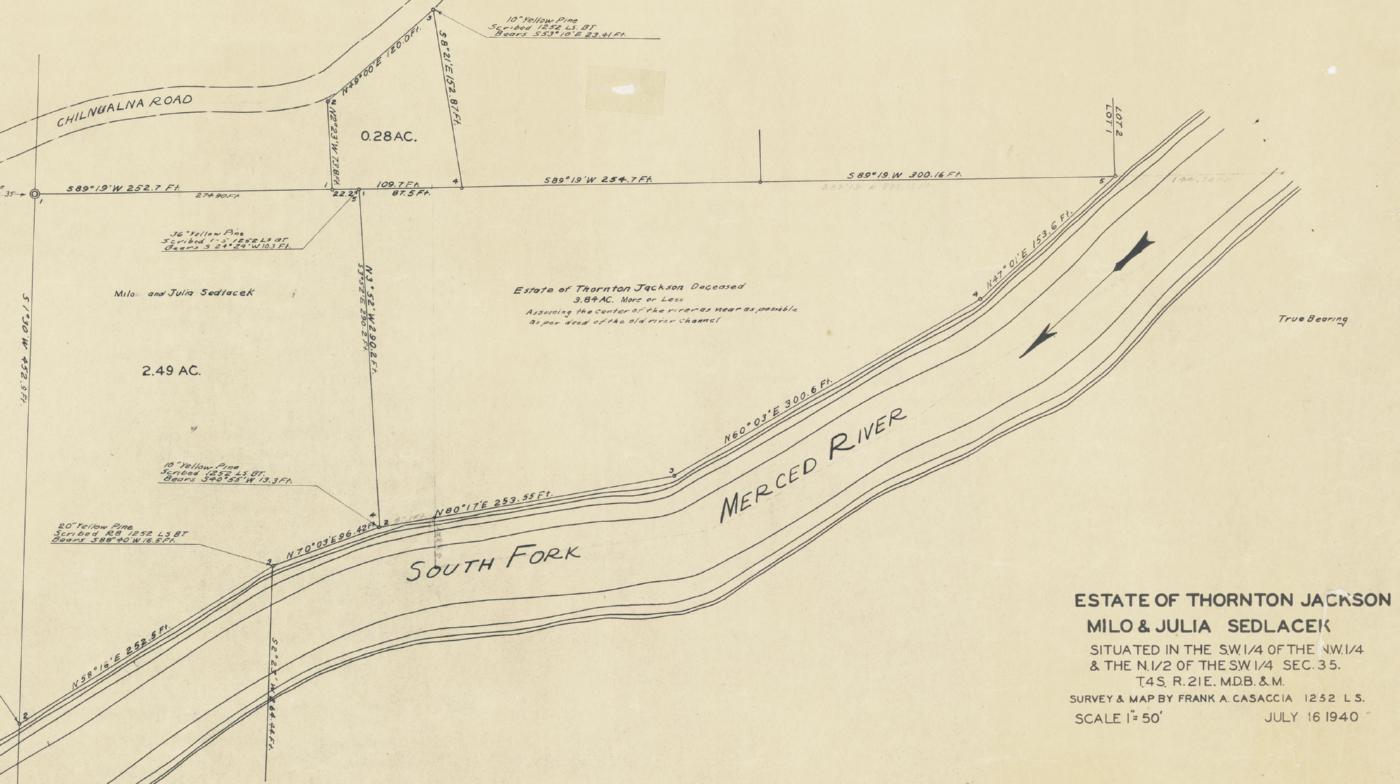
Portion of map, 1940, showing Jackson’s three parcels; the 2.49ac obtained from Tyrell in 1929 that reverted to the Sedlaceks via joint tenancy, and the .28ac parcel and 3.84ac parcels purchased from Maria and L.L. Leonard in 1936. (Yosemite Map Collection, item # YOSEMCA0448, https://npgallery.nps.gov/YOSE/AssetDetail/b264ec24-b47c-4eed-a2d6-5bc225684ba3)
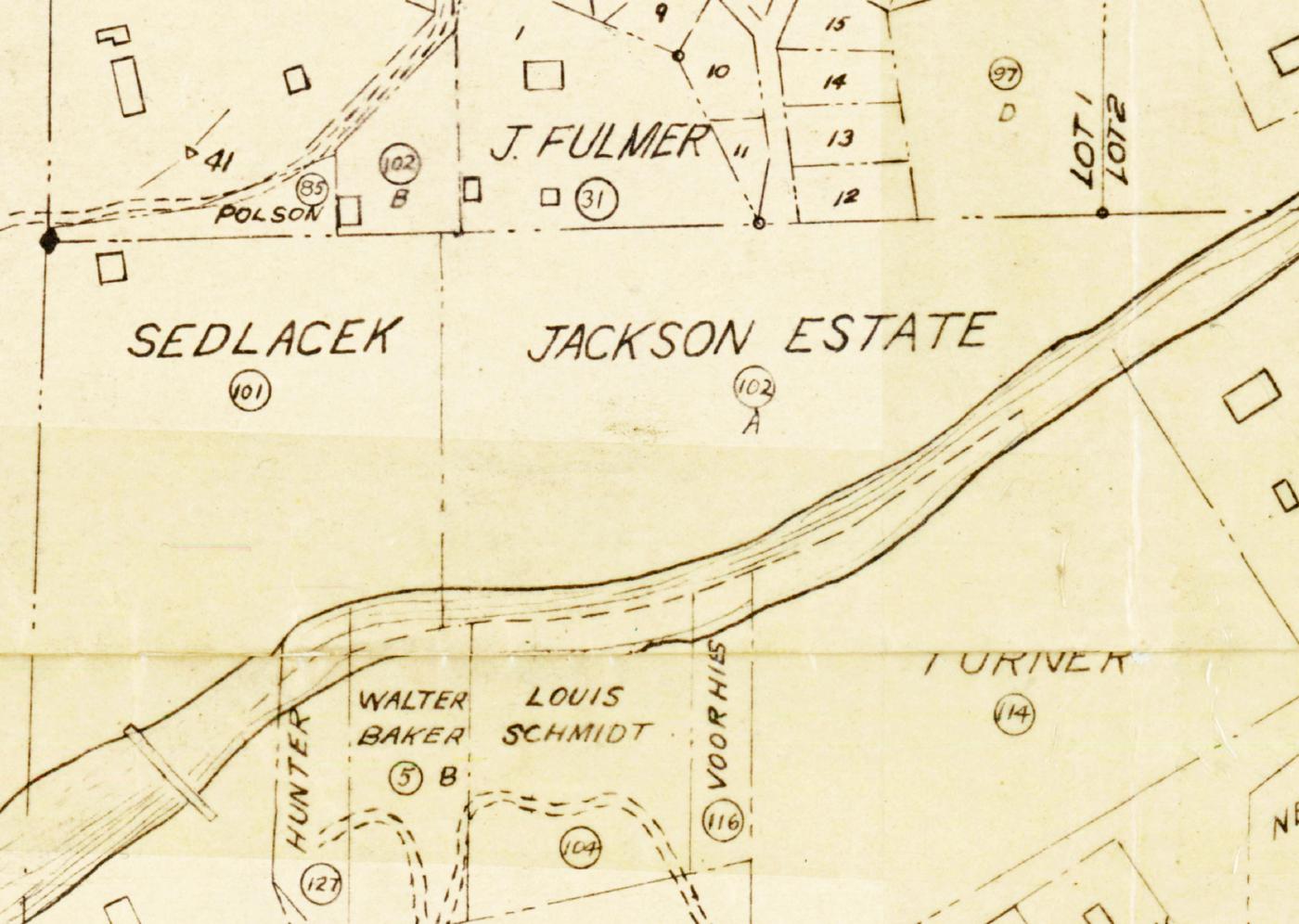
Portion of map, 1942 . (Yosemite Map Collection, item # YOSEMCA0516, https://npgallery.nps.gov/YOSE/AssetDetail/89955348-e505-4188-b41f-48819f2a59d5)
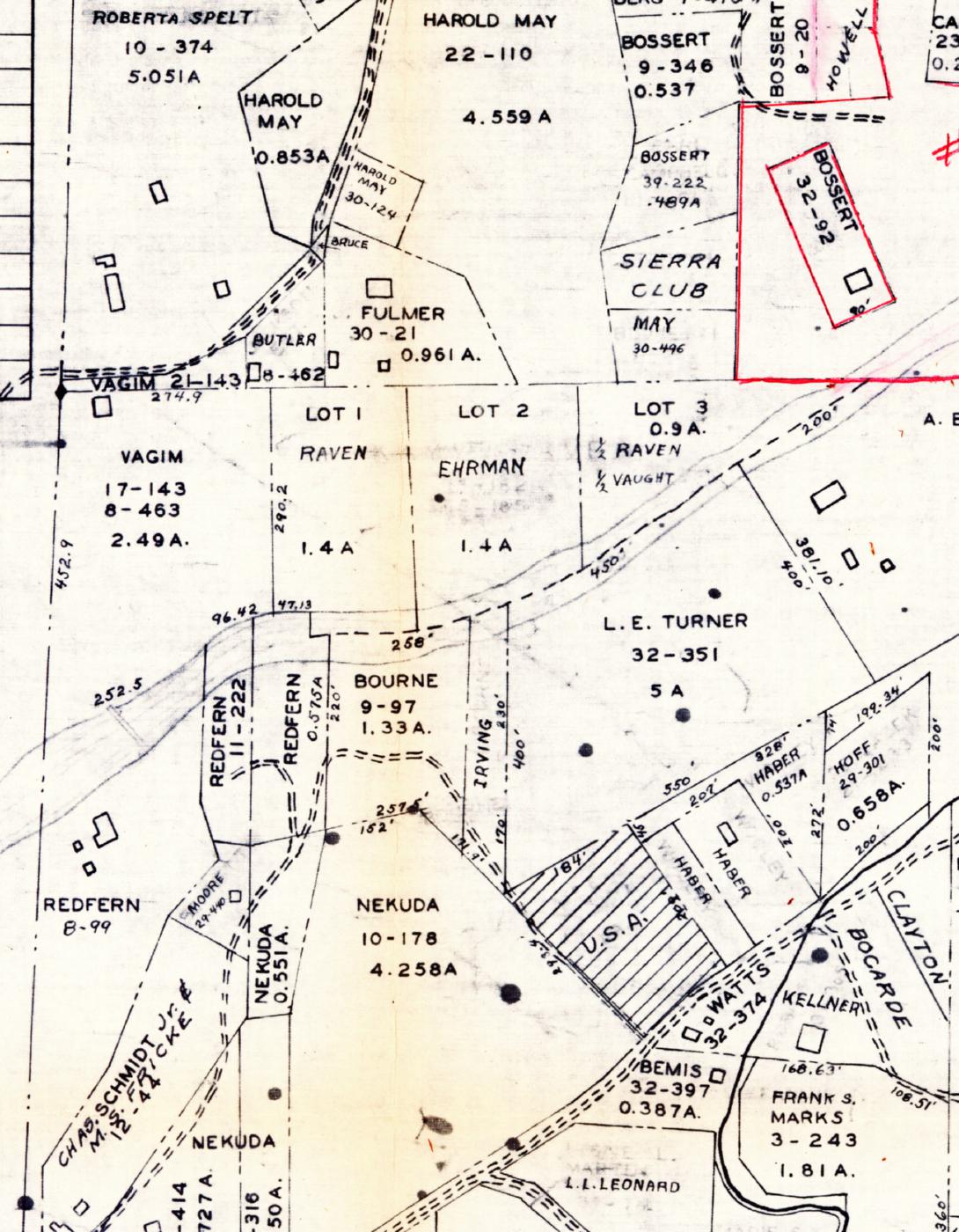
Portion of map, 1948 (with revisions through 1959). (Yosemite Map Collection, item #YOSEAR000729A, https://npgallery.nps.gov/YOSE/AssetDetail/096d154f-fe16-4eaf-aac1-dcc922fb1568)
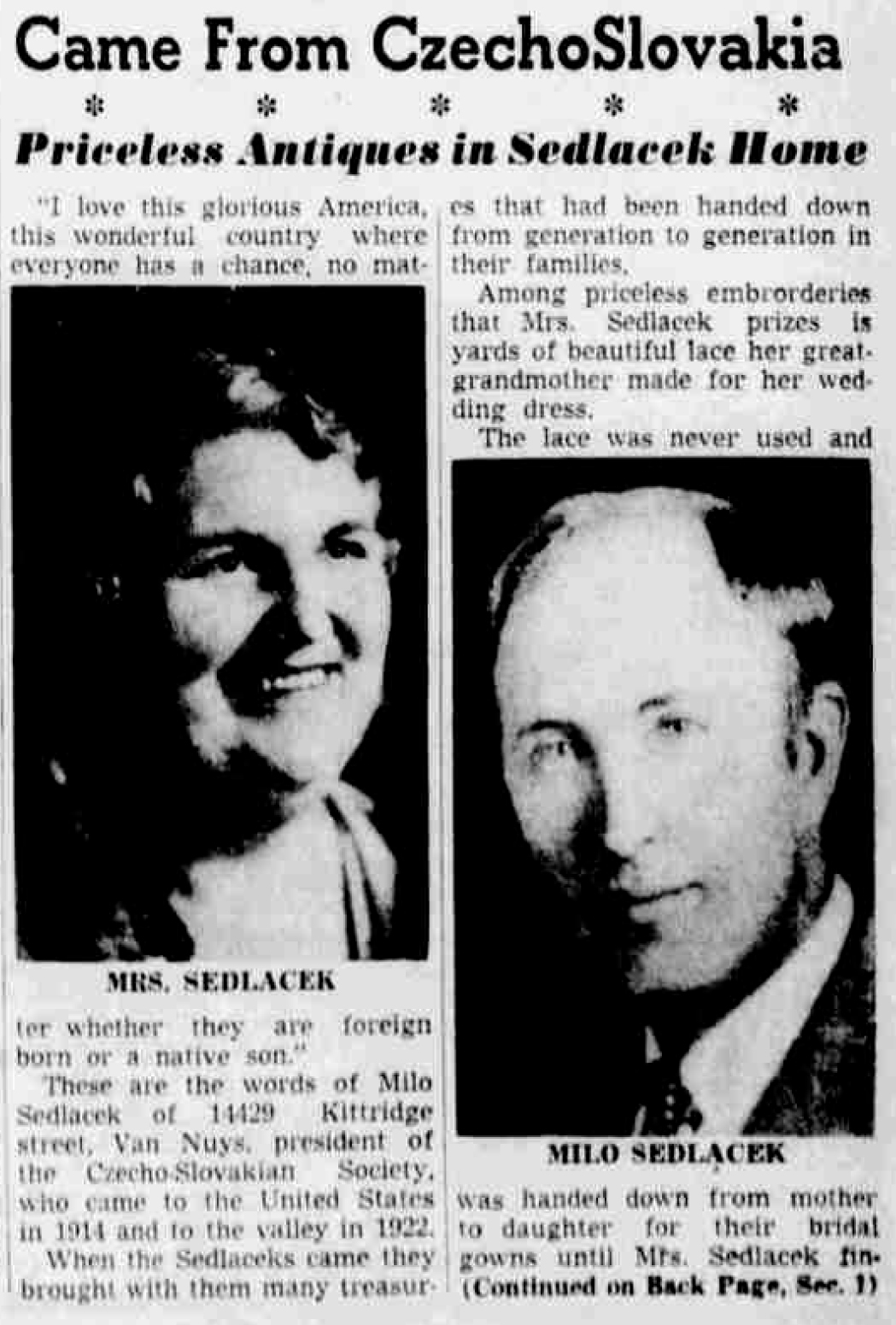
1939 03 16 San Fernando Valley Times
How Milo and Julia Sedlacek learned of Wawona has yet to be revealed, but at least we know they had a penchant for national parks. After a dinner at their home in 1941, a newspaper reported, “... colored movies of the national parks of the west were shown during the evening.”
Born Medodej Sedlacek in Paris, France to a French mother and Czeck father, Milo came to America around 1914. Julia’s parents moved to the American Midwest from Czechoslovakia in the 1870s; she was born in Illinois in 1882. Milo and Julia wed in Los Angeles in 1920, settling in the San Fernando Valley in the 1930s. Milo was president of the Czecho-Slovakian Society, and with Julia liked to show off their collection of priceless antiques brought with them from the old country. In 1930 Milo had listed his employment as “Manager of beach club,” and in 1940 as a motion picture actor for MGM Studios. He claimed to be “a member of one of Czecho Slovakia’s oldest and most aristocratic families, having come to the U.S. from Moravia,” and that his maternal great-grandmother was the “Polish Countess Orecky.”
After Jackson died and Butler moved out, the Leitch Homestead house was in dire shape. Given the descriptions by their neighbors, Norman May and Malcom Fulmer, the house that had been shared by two bachelors with two Airedales and chickens was likely due for a complete remodeling. Naming their house "Lodge Moravia," the Sedlaceks are credited with the decorative exterior stenciling on the house. They also built a small shrine facing the river with a statuette of the Virgin Mary, perhaps in memory of their only child, Milo Jr., who died two days after his birth in 1921. Milo’s birth-name, Medodej, makes reference to Saint Methodius who was known as an "Apostle to the Slavs,” suggesting that the Sedlaceks were Catholic (a predominant religion in Moravia).
Milo Sedlacek died in Fresno August 6, 1953. Julia’s date of death remains undiscovered.
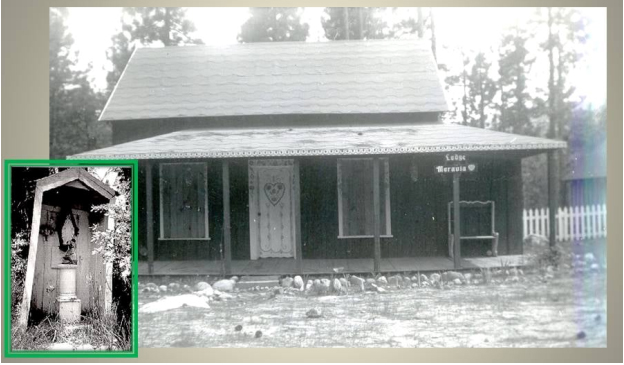
Leitch Homestead House during Sedlacek ownership showing stenciling on door, facia, window frames. Sign reads “Lodge Moravia.” Inset shows the shrine attributed to the Sedlaceks. (Image with inset posted by Tom Phillips on Facebook https://www.facebook.com/MariposaTom/posts/pfbid031Rf8Xwp4K4Xan86Tt6aXx3Hfv9vS4ji5zmgFzUUhKr6sgZAm1wTehE83x6JCjBefl)
Vagim
According to a Fresno Bee article in 1986, Edward Vagim bought the Sedlaceks’ property in 1943. By 1980, he and his wife, Blanche, had developed their property with 18 trailer and RV sites, calling the business “Wawona Village.”46 In the early ‘70s, they had also developed plans (including an artist’s conception) for a multi-story complex with some 45 condominium-hotel units overlooking the river. 47
Their efforts, however, faced opposition. In 1968, NPS Director George B. Hartzog, Jr., testified before the House Appropriations Subcommittee on Interior Department Spending, describing Wawona as “a hodgepodge of rental cabins, dilapidated cottages and expensive new homes, crisscrossed by roads and utility lines and bristling with no-trespassing signs,” calling the area a “growing threat to the integrity of our national park system.” Herzog decried the presence in Wawona of “motels and trailer courts, a lumber yard, stores and restaurants, and … problems of sewage and garbage disposal, fire protection, law enforcement, traffic control and public sanitation." He proposed a multi-million-dollar effort to buy all the private holdings in the park. 48
In September, 1977, a directive from the new Director of National Parks, William J. Whelan, assumed “full and unquestioned jurisdiction” over Section 35 in Wawona, retarding development to make it easier and less expensive for the NPS to purchase Wawona properties. Ed Vagim joined the Wawona Property Owners Association in opposing the effort. 49
In a satirical letter to the Mariposa Gazette, in which Santa Claus is evicted from the North Pole by the NPS, Charles Cushman and Robert Bradford of the Wawona Property Owners Assn. signaled their intention to “file a lawsuit against the NPS on the governmental failure to file an environmental impact statement before filing condemnation.” 50
After threatening to condemn the properties of homeowners James Downey and Norman May, at the end of 1977 the NPS initiated the condemnation of the Vagim’s “Wawona Village,” according to the park’s land acquisition officer Tom Kirn, because of Vagim’s continuing plans to build a hotel on the site. Kirn also objected to Vagim’s ongoing construction of a water treatment system on the property, despite his having been issued permit by the NPS. 51
A national organization was formed – the National Park Inholders Association, with Charles Cushman as executive director and an advisory board including Yosemite historian Shirley Sargent and Wawona resident Marie Escola. Their first task was to influence senators to defeat HR 8336 – Title III, which passed the House in February of 1978, mandating the purchase of all private property in Yosemite National Park within four years. In April, Yosemite was exempted from the four-year mandate. 52
In October of 1978, NPS Director Whalen said the 1977 “get tough” policy was a mistake, that property condemnations would only be used in rare cases, and the four-year mandate would be dropped. 53
Ed Vagim died in 1980, but his wife and son, Doug, continued to run Wawona Village while fighting over the condemned property. In 1984 McClatchy News reported that Vagim’s “decade-long battle” would move into the U.S. District Court in Fresno, to determine the fair market value of the property. 54
While the Vagim family believed their 2.6 acre property was worth $485,000, the court ruled it was worth $85,000. Charles Cushman expressed his concern that Ed Vagim’s 74-year-old widow would be evicted from the property.55 In 1986, NPS rangers arrived to begin removal of the Wawona Village trailers. Assistant U.S. Attorney Edward R. Kandler offered on behalf of the government that Blanche Vagim could remain in the house, but only as a residence.56
The last resident of the Leitch Homestead House, Blanche Vagim died in 1994.
ENDNOTES
1 Mariposa Gazette (Mariposa, CA), June 4, 1884, 3:2.
2 FamilySearch, “California County Marriages, 1850–1952,” database entry, https://www.familysearch.org/ark:/61903/1:1:6NW3-GVQ4 (free registration required).
3 A. Van Campen, letter, transcribed by W. H. and M. V. H., Yosemite Museum & Archives.
4 Hattie Bruce Harris to Douglass Hubbard, March 2, 1959, Yosemite Museum & Archives.
5 FamilySearch, database entry, https://www.familysearch.org/ark:/61903/3:1:3QS7-89DH-J84R (free registration required).
6 FamilySearch, database entry, 1831, https://www.familysearch.org/ark:/61903/3:1:3QHV-F3ZY-3939-V; https://www.familysearch.org/ark:/61903/3:1:3QHV-N3ZY-39S3-K (free registration required).
7 John Quincy Adams Diary, December 1843, Founders Online, https://www.primarysourcecoop.org/publications/jqa/document/jqadiaries-v44-1843-12-p149--entry12.
8 FamilySearch, database entry, 1848, https://www.familysearch.org/ark:/61903/3:1:3Q9M-CSK7-1S8K-3 (free registration required).
9 New-York Daily Tribune, June 2, 1855, via Library of Congress, https://www.loc.gov/resource/sn83030213/1855-06-02/ed-1/?sp=2.
10 FamilySearch, database entry, https://www.familysearch.org/ark:/61903/3:1:3QS7-99WT-CC3L (free registration required).
11 FamilySearch, database entry, https://www.familysearch.org/ark:/61903/3:1:3QS7-L9V4-HF3Y (free registration required).
12 Mariposa Gazette (Mariposa, CA), March 30, 1889, 3:2.
13 Mariposa Gazette (Mariposa, CA), September 30, 1882, 3:1.
14 Mariposa Gazette (Mariposa, CA), May 9, 1885, 3:1.
15 Yosemite Commission Minutes, vol. A, 1880–88, June 3, 1896, 7; June 6, 1900; April 4, 1903.
16 Yosemite Commission Minutes, vol. A, 1880–88, August 10, 1896, 69.
17 Stockton Mail, March 21, 1910.
18 Merced County Sun, March 22, 1910.
19 FamilySearch, database entry, https://www.familysearch.org/ark:/61903/3:1:S3HY-6P89-BR1 (free registration required).
20 Mariposa Gazette (Mariposa, CA), October 17, 1891, 3:1.
21 Baxter and Leitch also worked together as “Special Deputies” in a Wawona polling place: Mariposa Gazette 1902 06/21
22 FamilySearch, database entry, https://www.familysearch.org/ark:/61903/3:1:3Q9M-CS1Y-K3KQ-N (free registration required).
23 FamilySearch, database entry, https://www.familysearch.org/ark:/61903/3:1:3QS7-L9SV-S2T2 (free registration required); Find a Grave, memorial for Edward N. Baxter, https://www.findagrave.com/memorial/238708580/edward_n-baxter.
24 Mariposa Gazette (Mariposa, CA), July 14, 1900, 1:7.
25 Los Angeles Herald, January 19, 1905.
26 Baxter to Curtin, May 15, 1905, Bopp Collection.
27 “Candidate Biography: Harry Bunkers,” JoinCalifornia.com, https://www.joincalifornia.com/candidate/11514.
28 Bob Pavlik to Gordon Chappell, August 19, 1986, Vagim House, NPS Collection, Series 05, Subseries B, Folder 0124.
29 Mariposa County, Book 31 of Deeds, 262, September 13, 1929; restated June 23, 1936, D. A. Leonard et al. to Thornton Jackson. Copy in Bopp Files.
30 Tom Bopp, video interview with Malcolm and Anita Fulmer, July 30, 2004.
31 Yosemite National Park, Monthly Superintendent’s Report, December 1935, 2.
32 Mariposa County, Land Records, nos. 1345 (June 6, 1924) and 1346 (June 7, 1924). Copies in Bopp Files.
33 Columbia College Oral History Project, interview no. 113, https://apps.gocolumbia.edu/oralhistory/listen?113.
34 FamilySearch, database entry, https://www.familysearch.org/ark:/61903/3:1:3QS7-L9SV-S2T2 (free registration required).
35 FamilySearch, “California State Census, 1865,” https://www.familysearch.org/ark:/61903/3:1:9392-9N9N-LZ (free registration required); FamilySearch, “United States Census, 1880,” https://www.familysearch.org/ark:/61903/3:1:33S7-9YB5-SVZ (free registration required).
36 Merced Sun-Star September 9, 1915.
37 Mariposa Gazette (Mariposa, CA), October 14, 1916.
38 Mariposa Gazette (Mariposa, CA), May 29, 1920, Merced County Sun (Merced, CA), May 27, 1921.
39 WWH Papers. Copy in Bopp Files.
40 CAW Diaries, December 17, 1917; December 28, 1923; October 8, 1924. Washburn Papers, December 28, 1917; Mariposa Gazette (Mariposa, CA), March 4, 1922.
41 Washburn Papers, December 28, 1917. Yosemite Archives. Copy in Bopp Files.
42 WWH Papers, handwritten scraps on insurance reimbursement slips, typed 1945. Copy in Bopp Files.
43 Tom Bopp, audio interview with Norman May, August 12, 2007.
44 Visalia Times-Delta, October 10, 1934.
45 Mariposa County Land Records, June 23, 1936, 495 (no. 568), 496 (nos. 569–70).
46 Mariposa Gazette (Mariposa, CA), December 22, 1977; Artist’s Conception at Vagim House, 1983. Author’s recollection.
47 Santa Cruz Sentinel, March 11, 1984.
48 AP article reprinted in part in: Oakland Tribune, April 19, 1968, Petaluma Argus Courier, May 15, 1968.
49 Mariposa Gazette (Mariposa, CA), December 1, 1977.
50 Mariposa Gazette (Mariposa, CA), December ?, 1977.
51 Mariposa Gazette (Mariposa, CA), December 22, 1977.
52 Mariposa Gazette (Mariposa, CA), March 9, 1978, Mariposa Gazette (Mariposa, CA), April 6, 1978.
53 Mariposa Gazette (Mariposa, CA), October 19, 1978.
54 Santa Cruz Sentinel, March 11, 1984.
55 Fresno Bee, March 15, 1984.
56 Fresno Bee, July 24, 1986.
